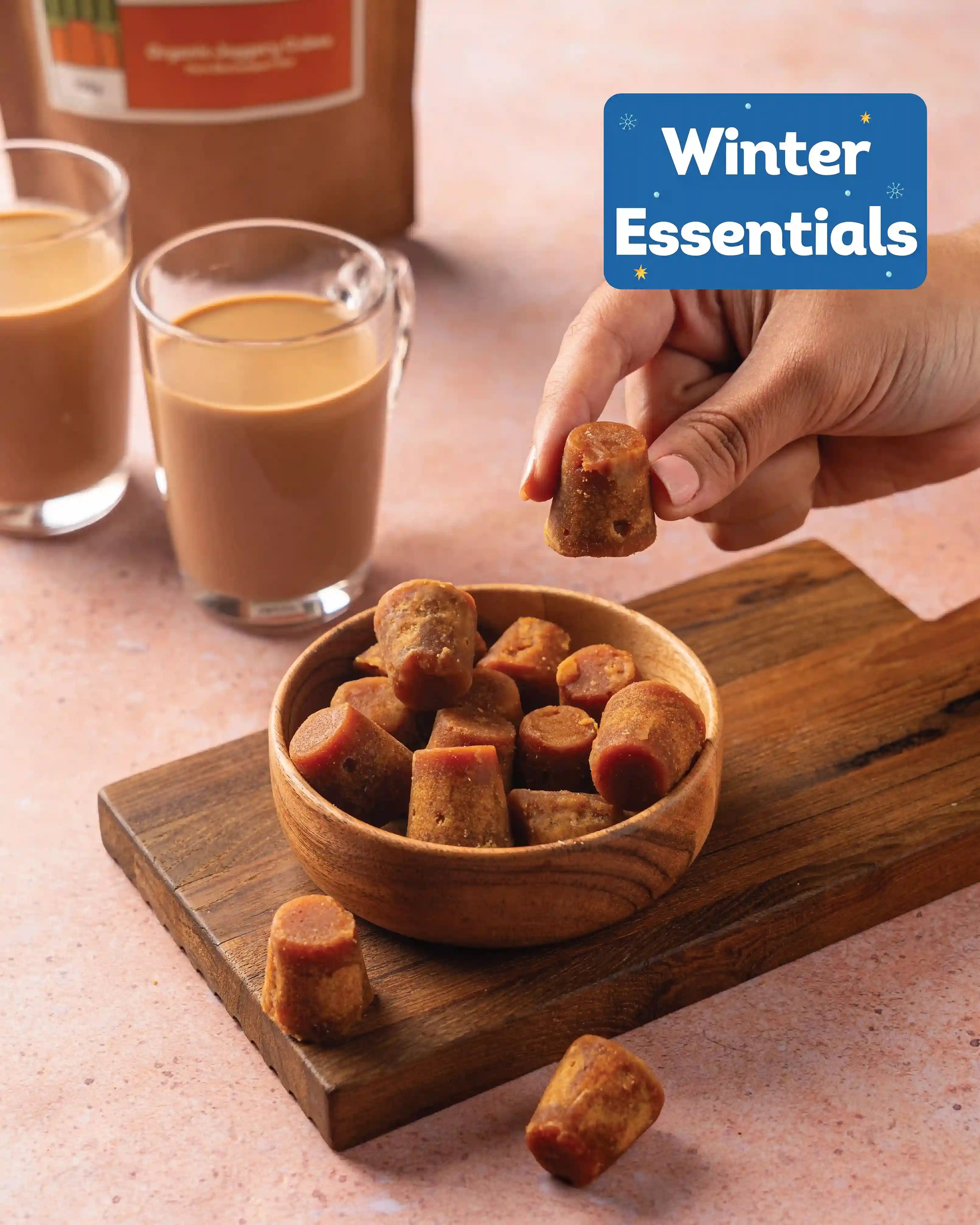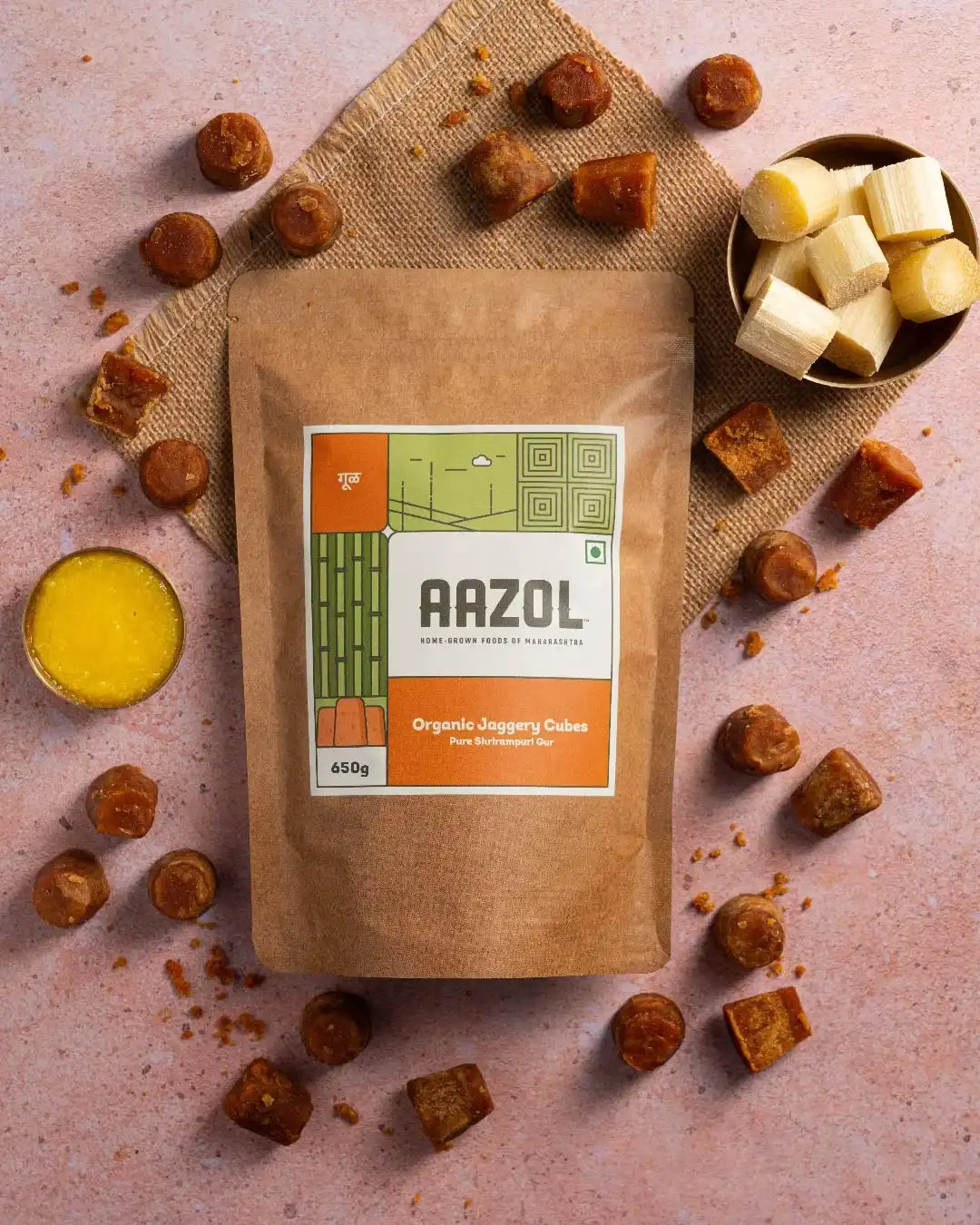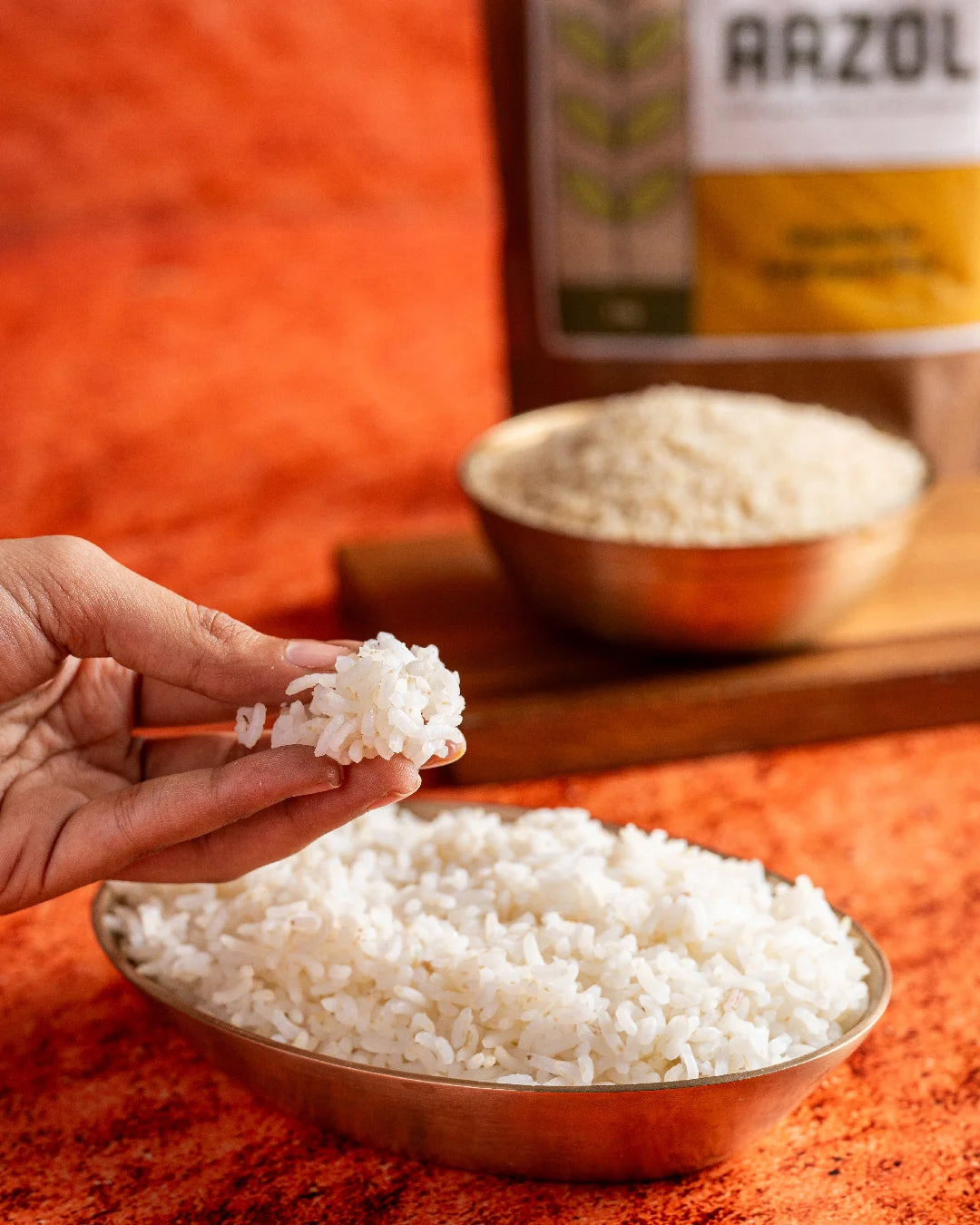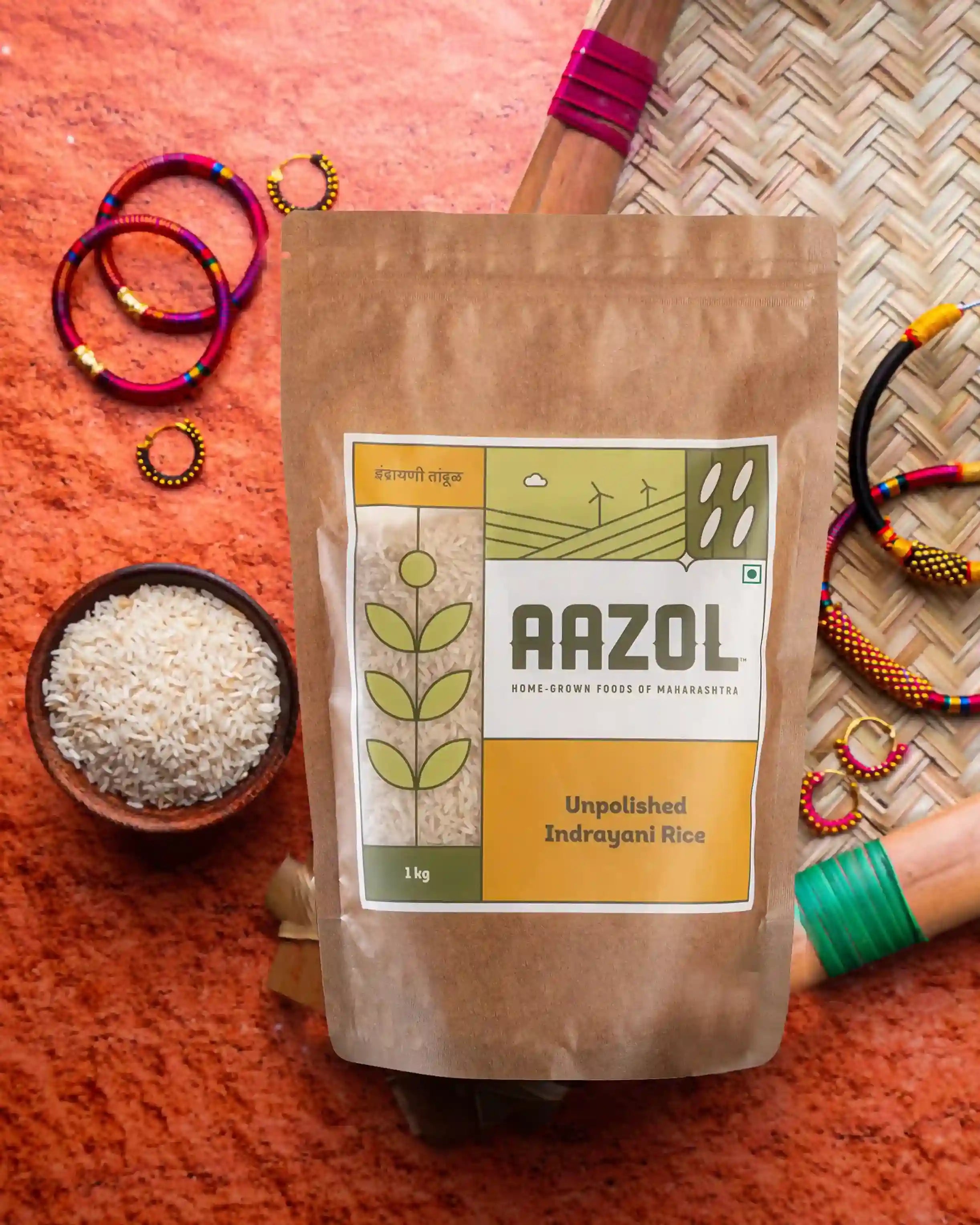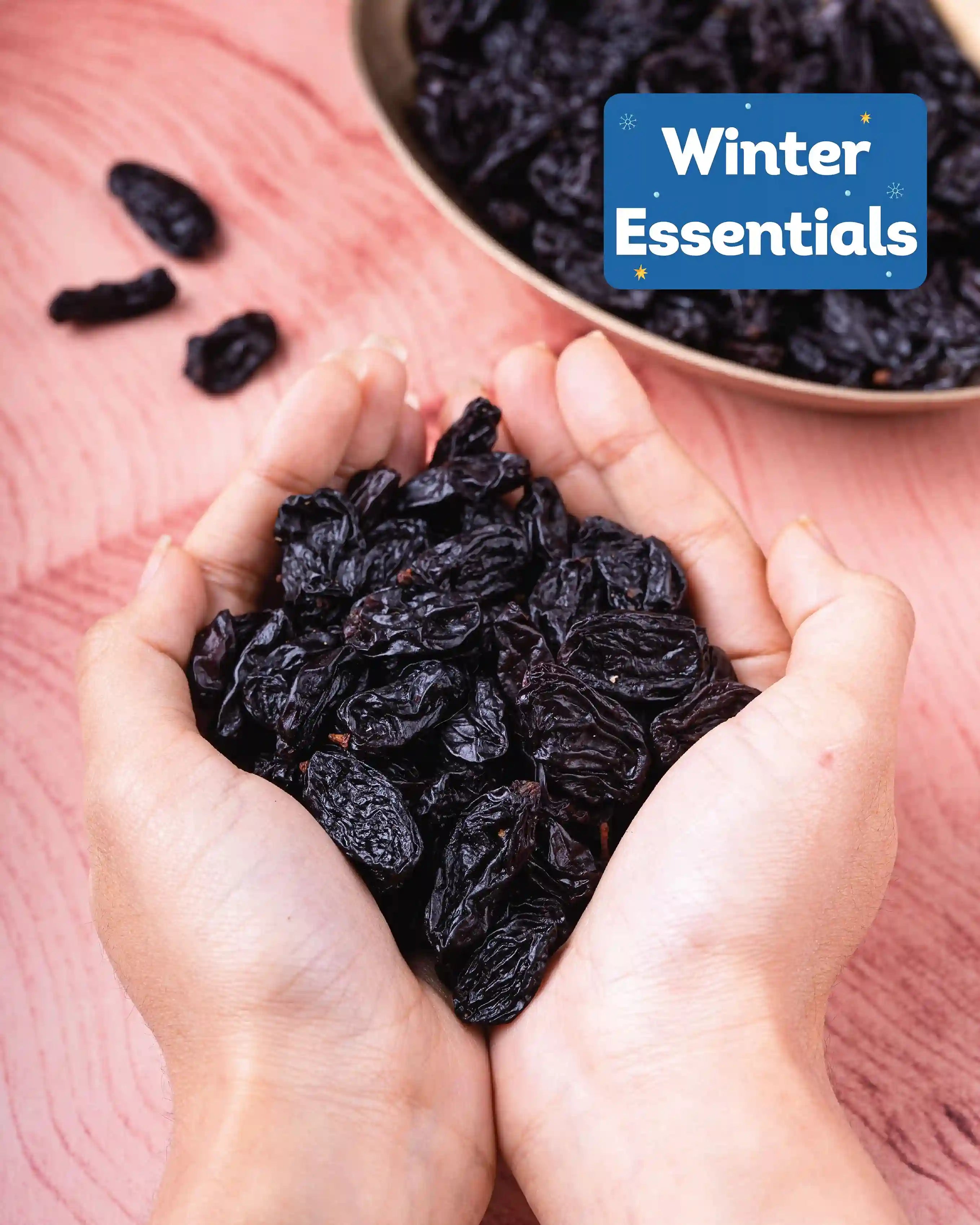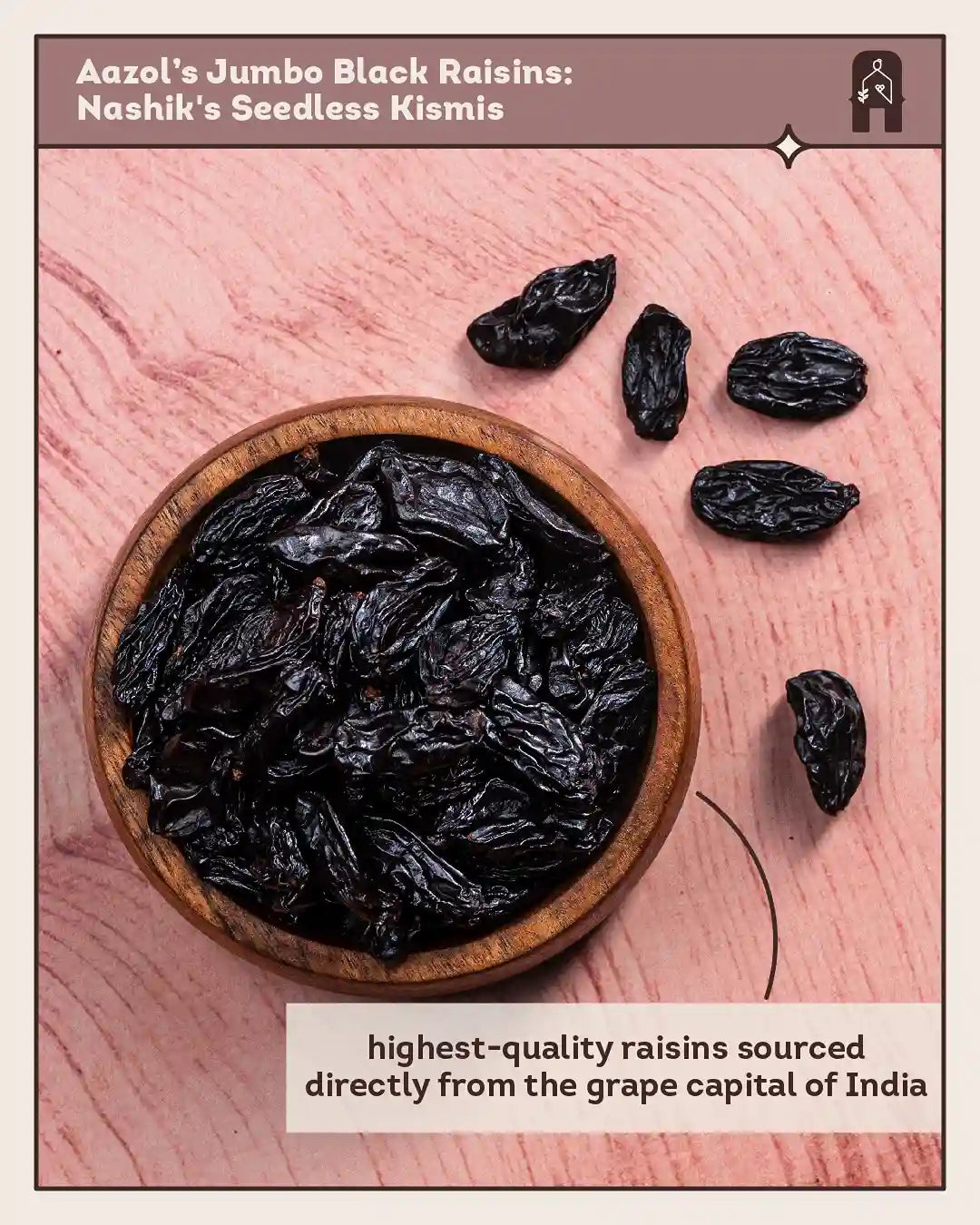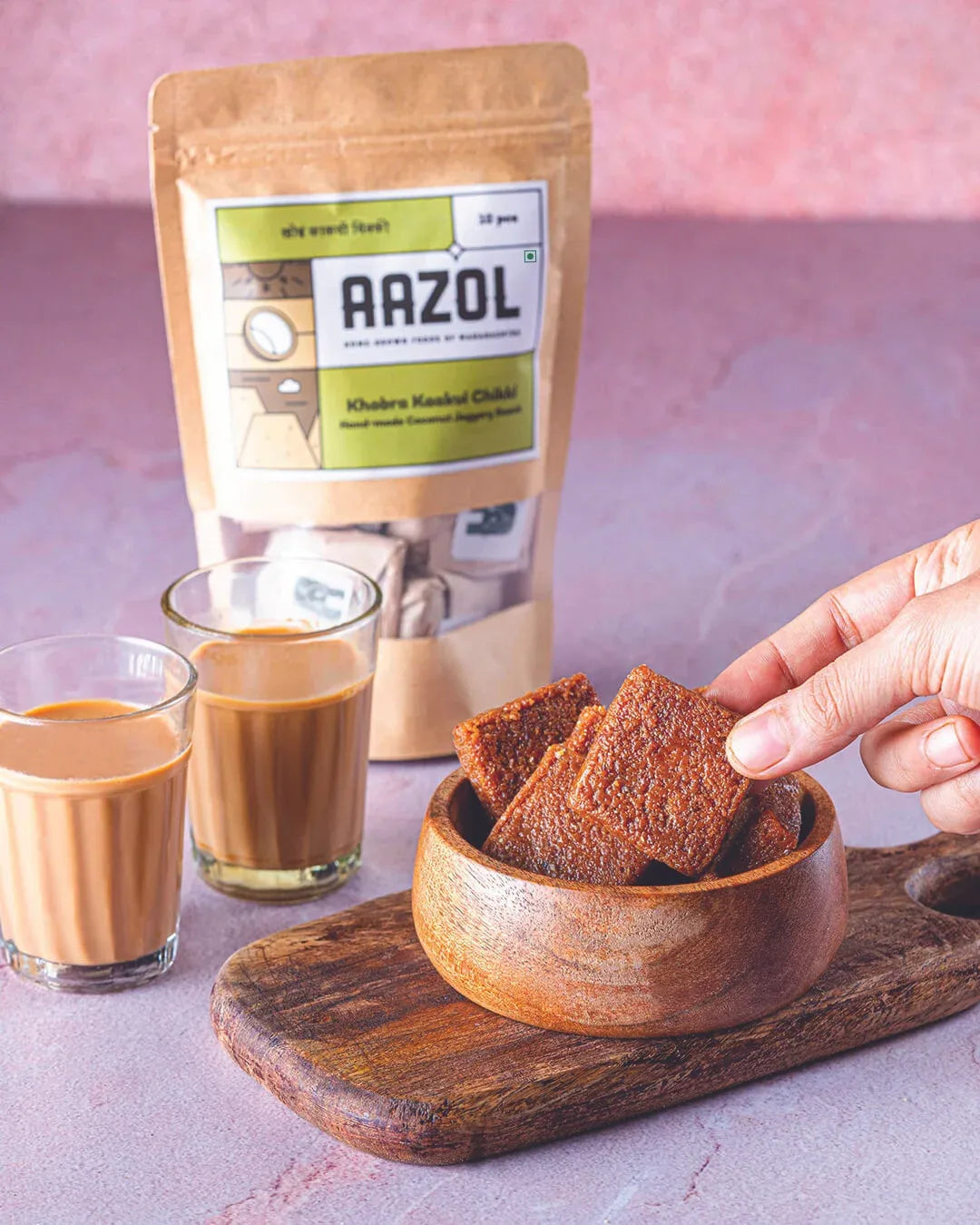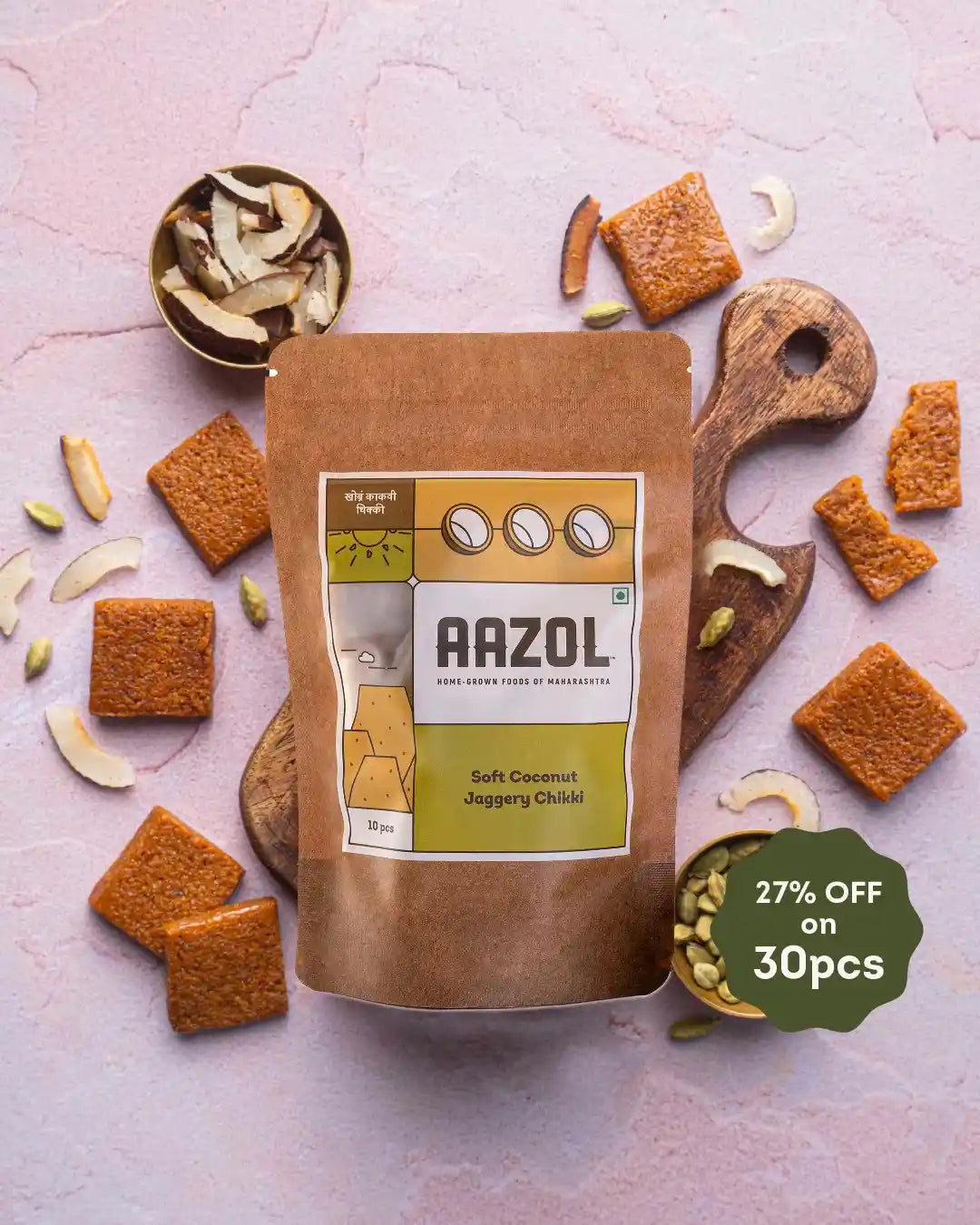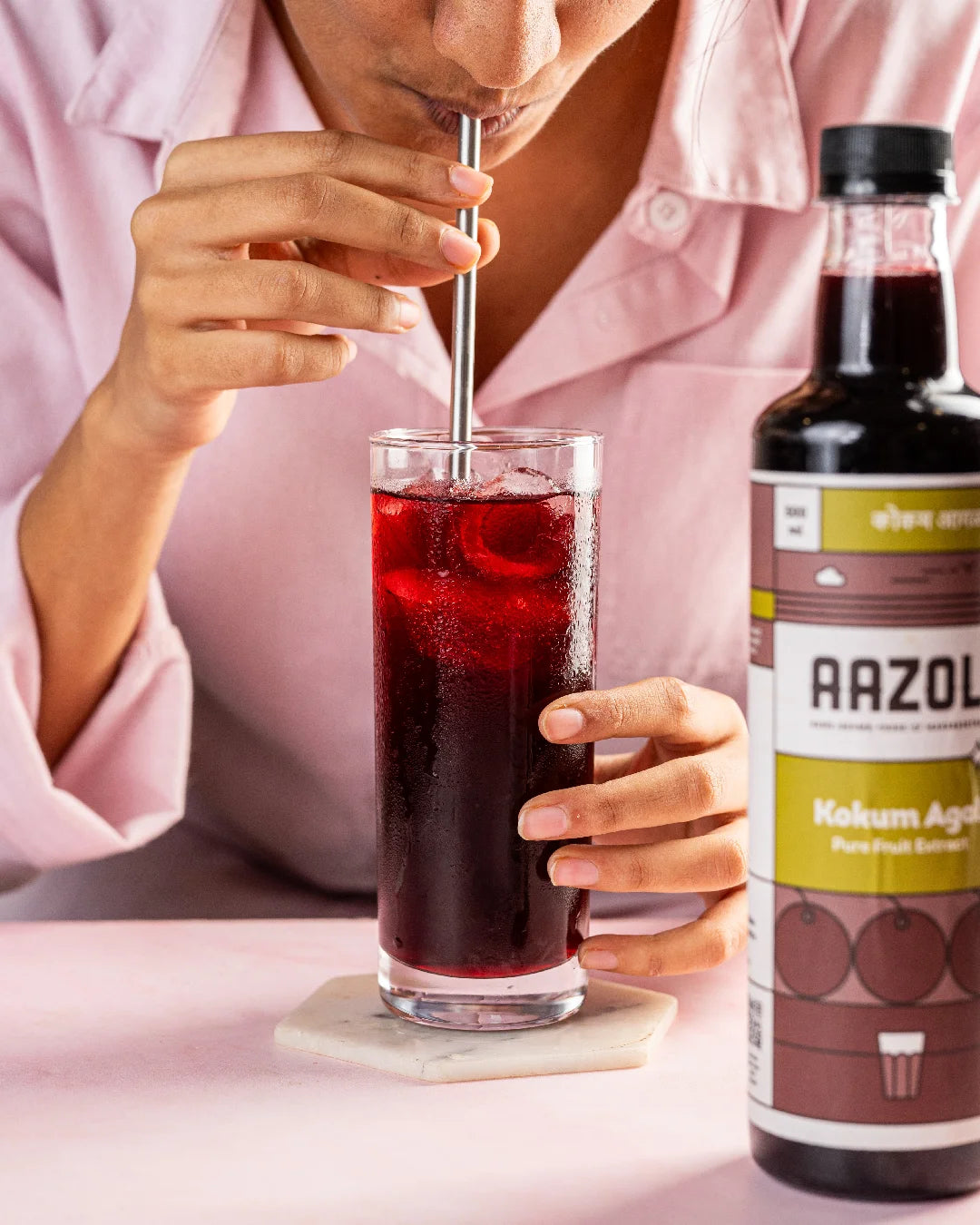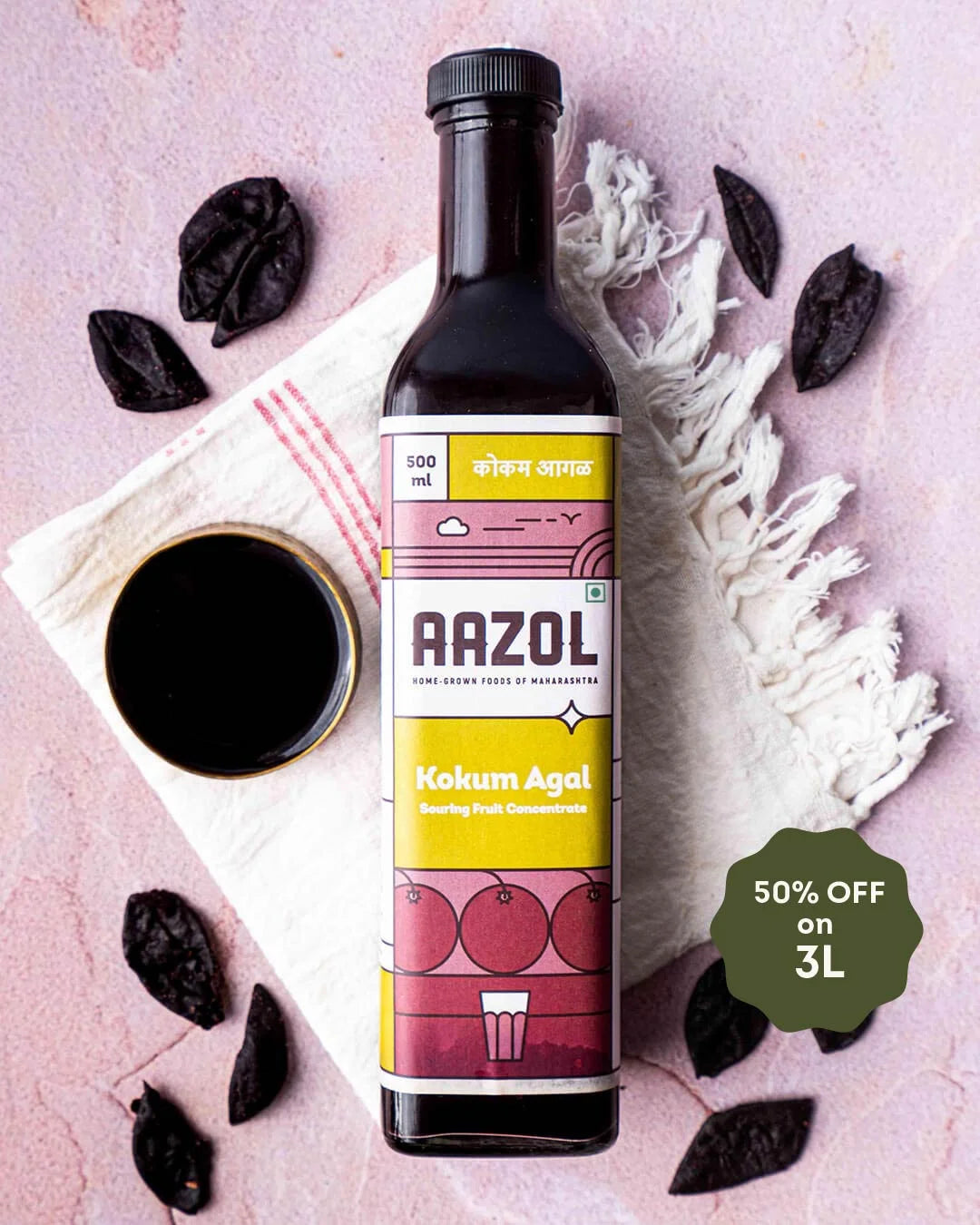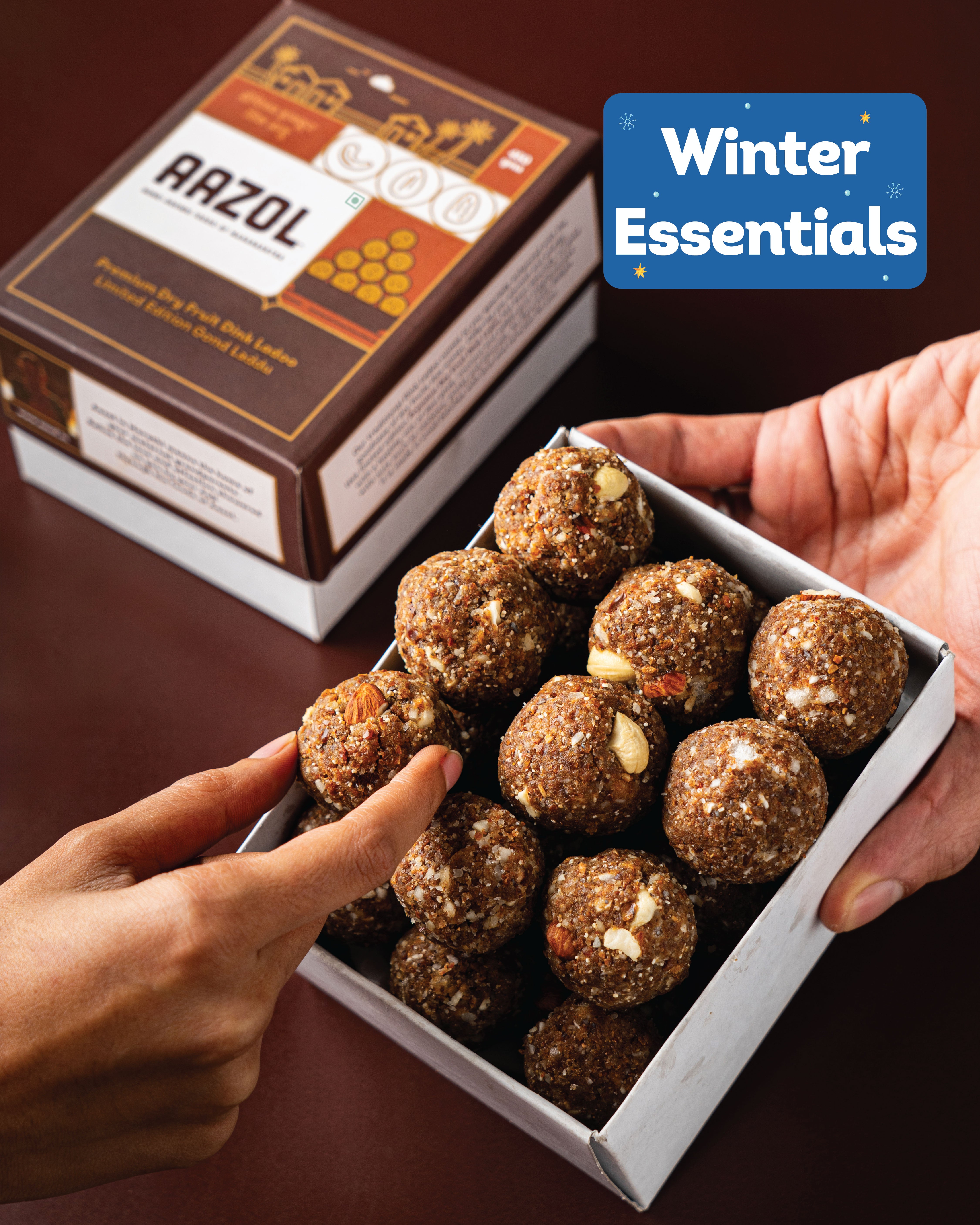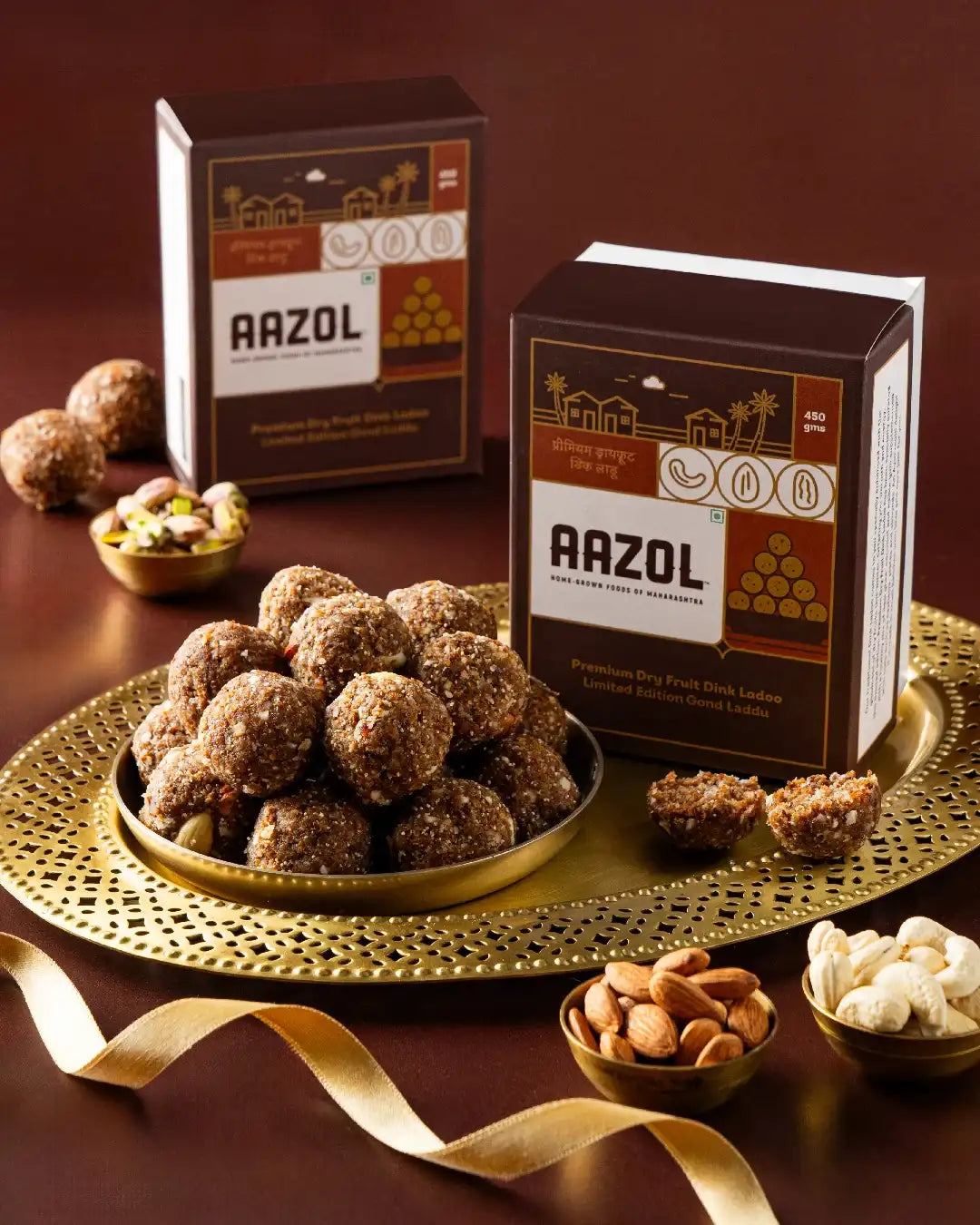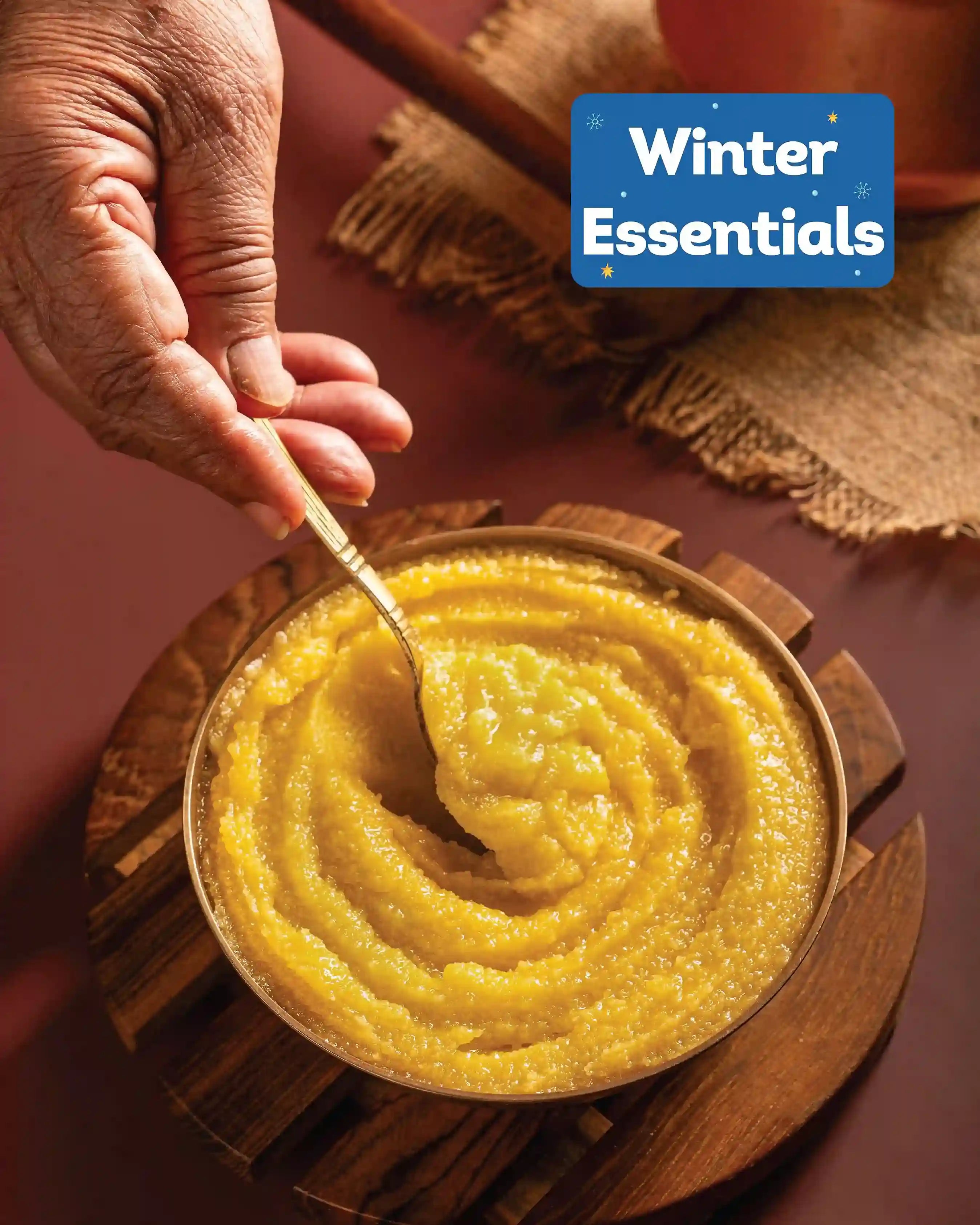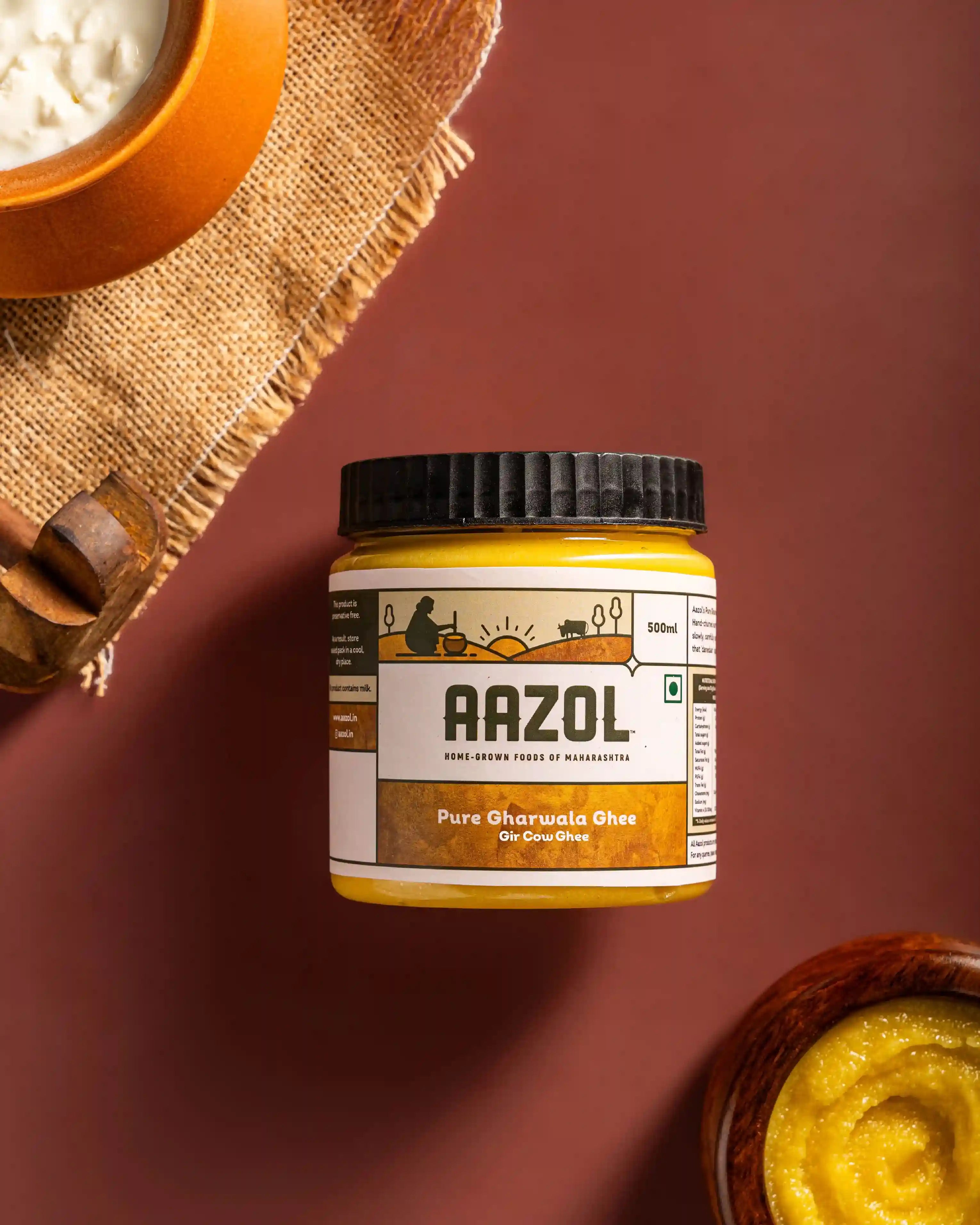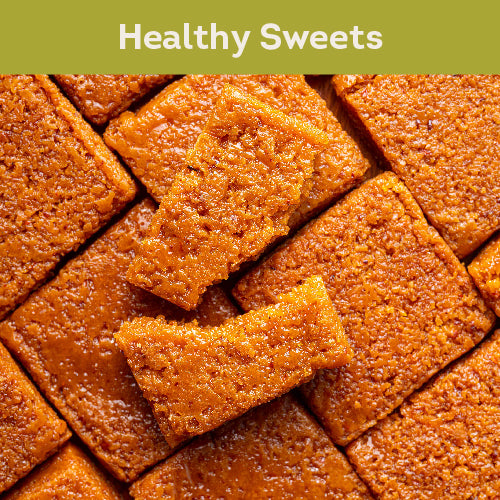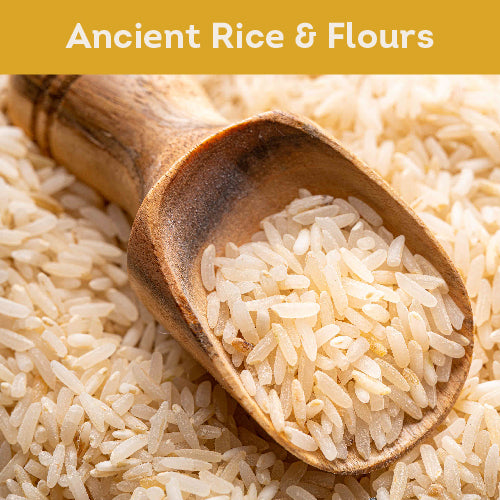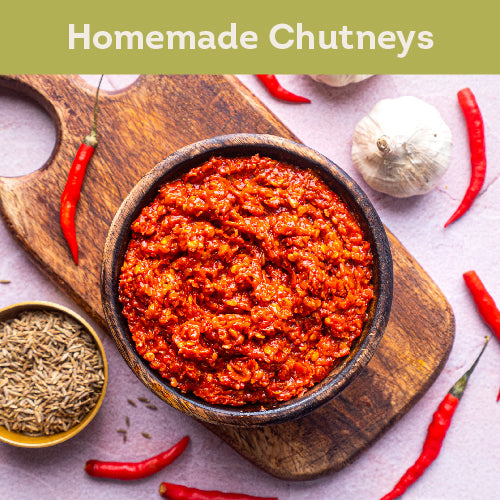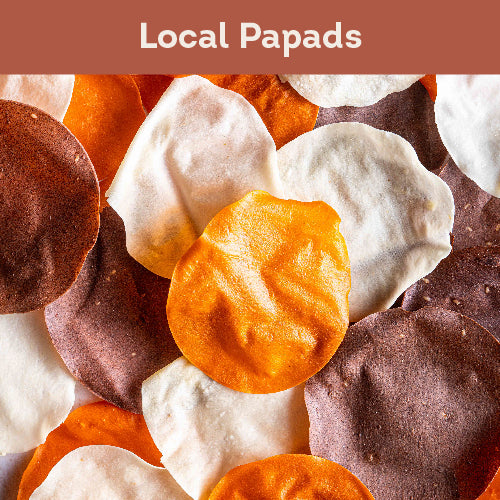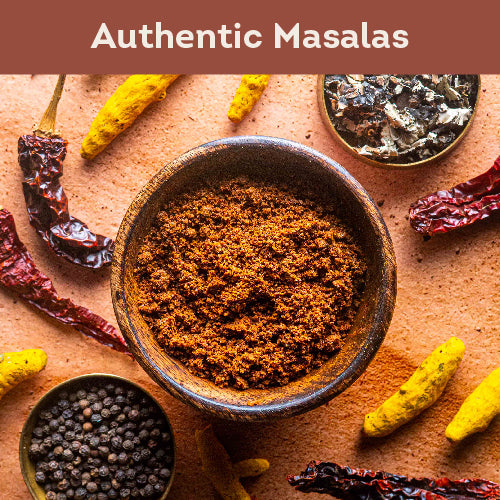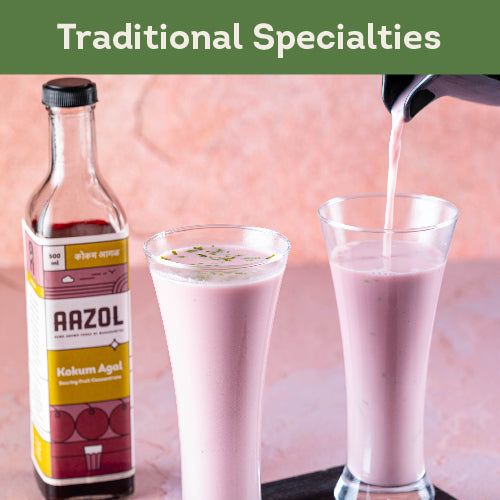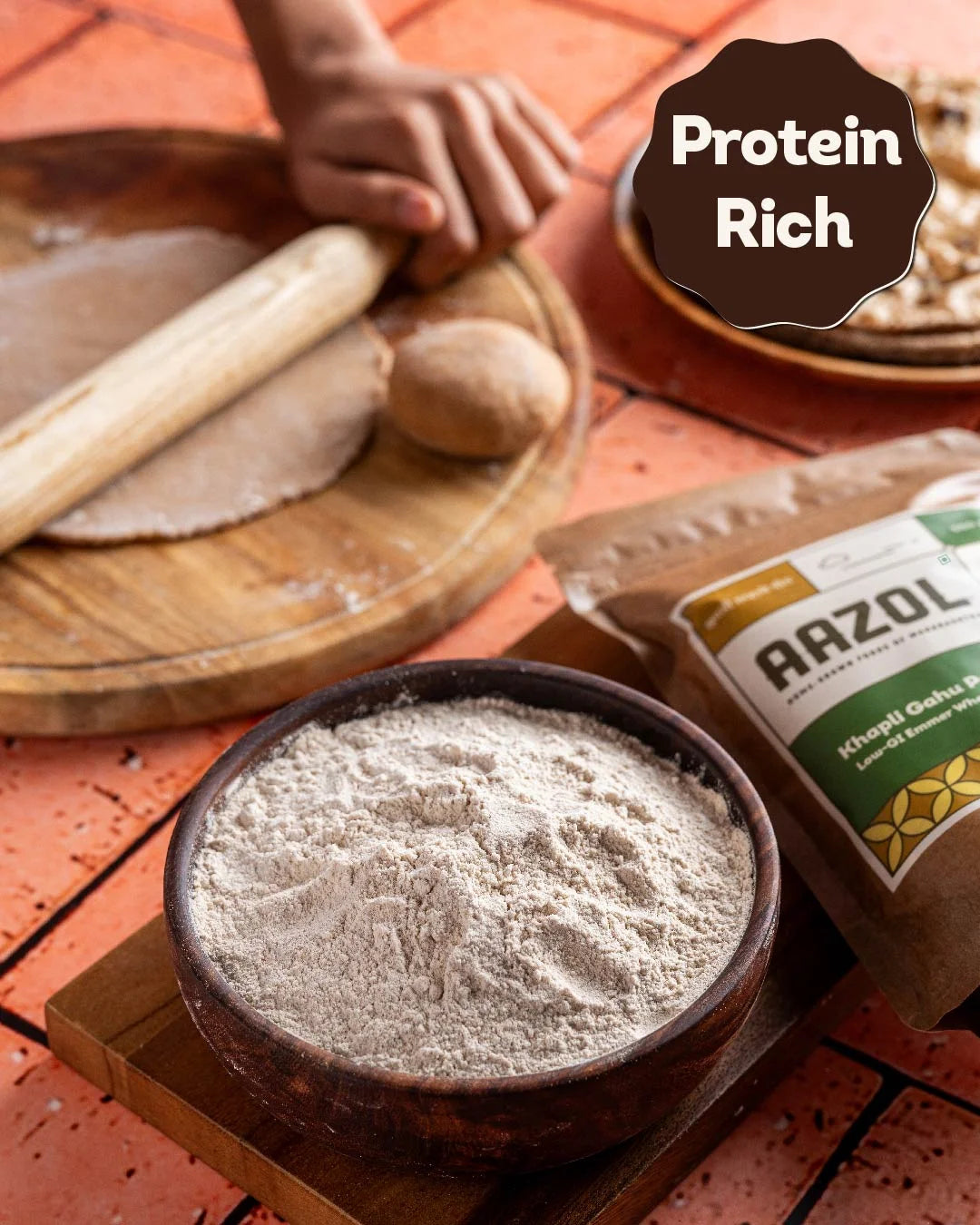
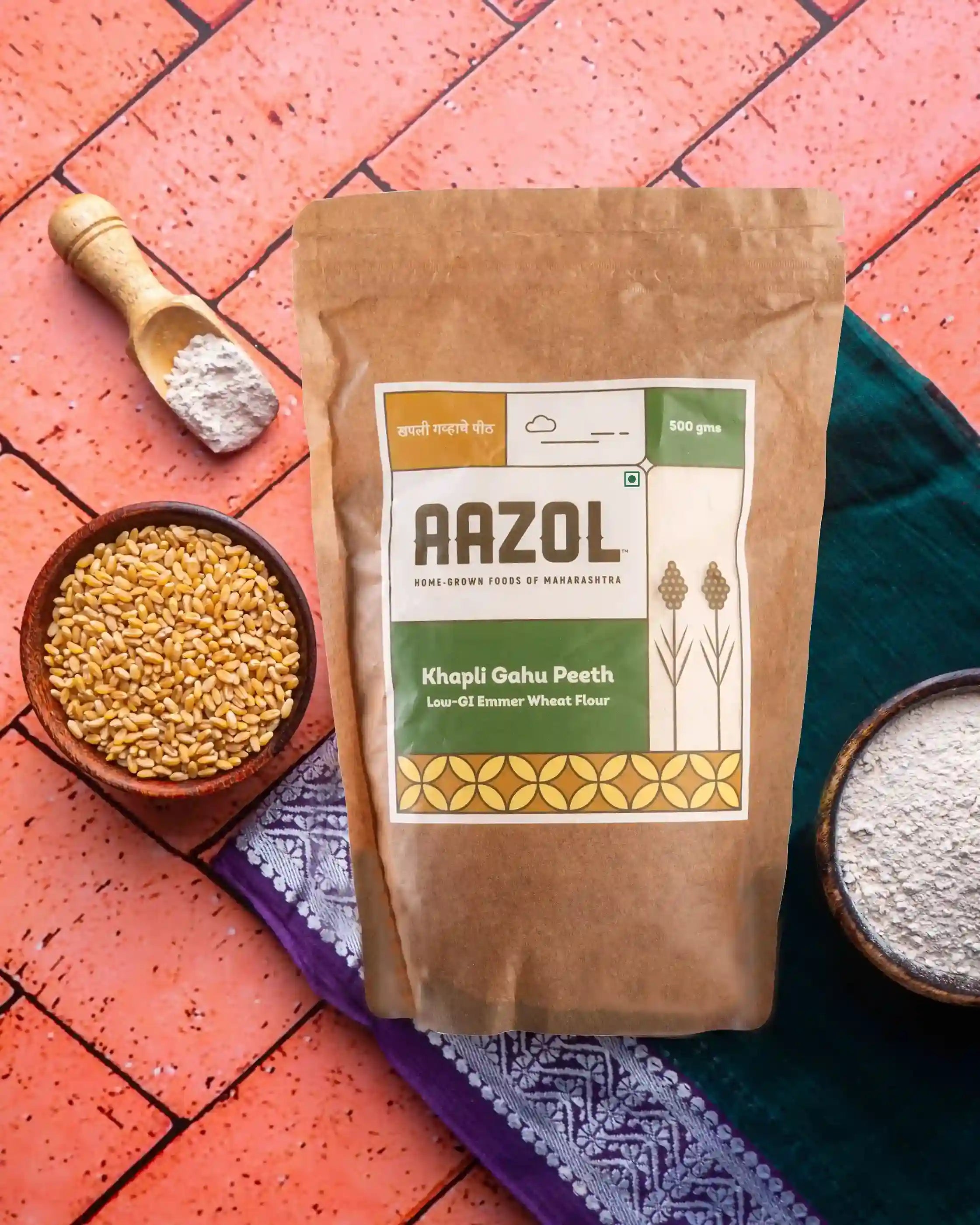
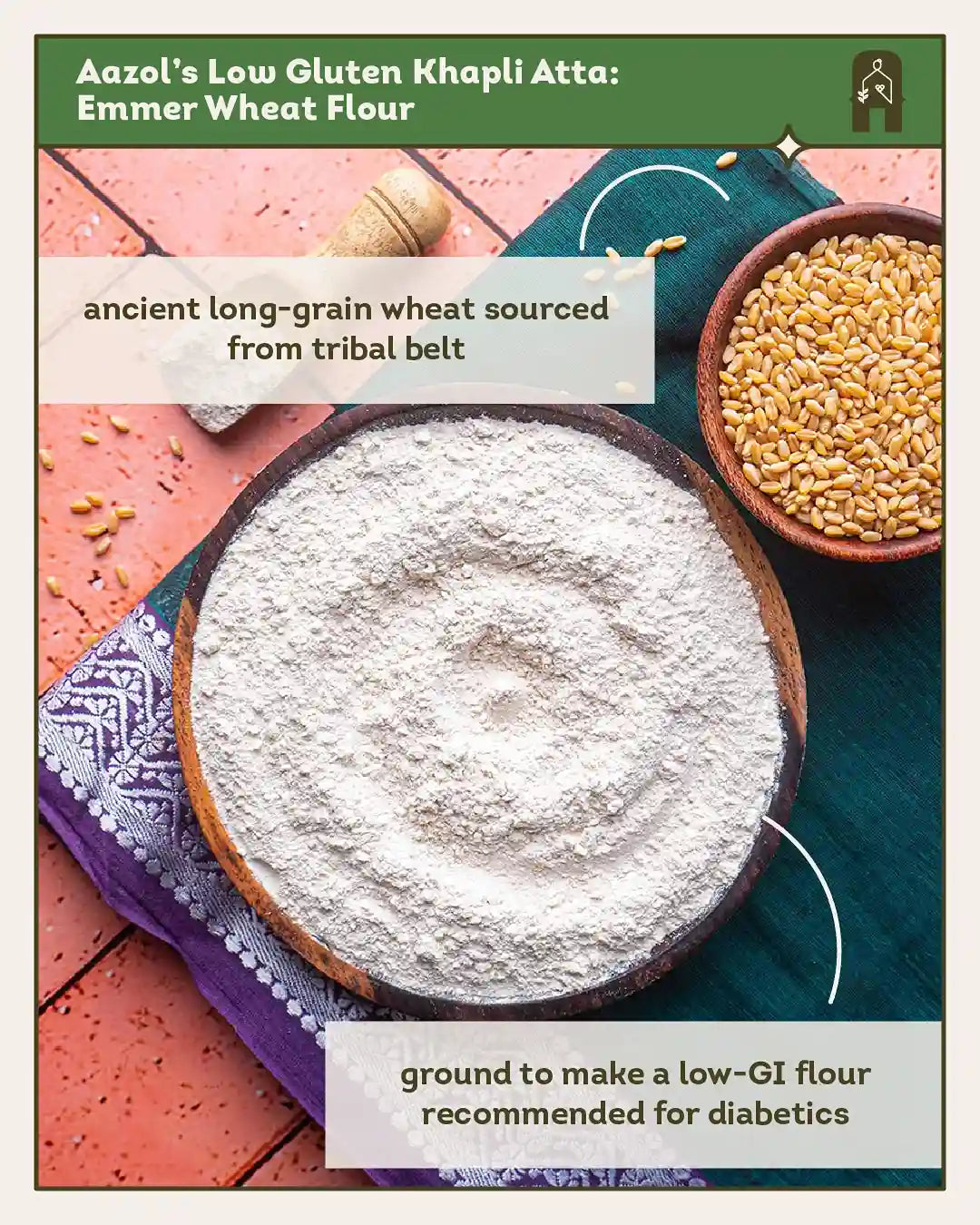
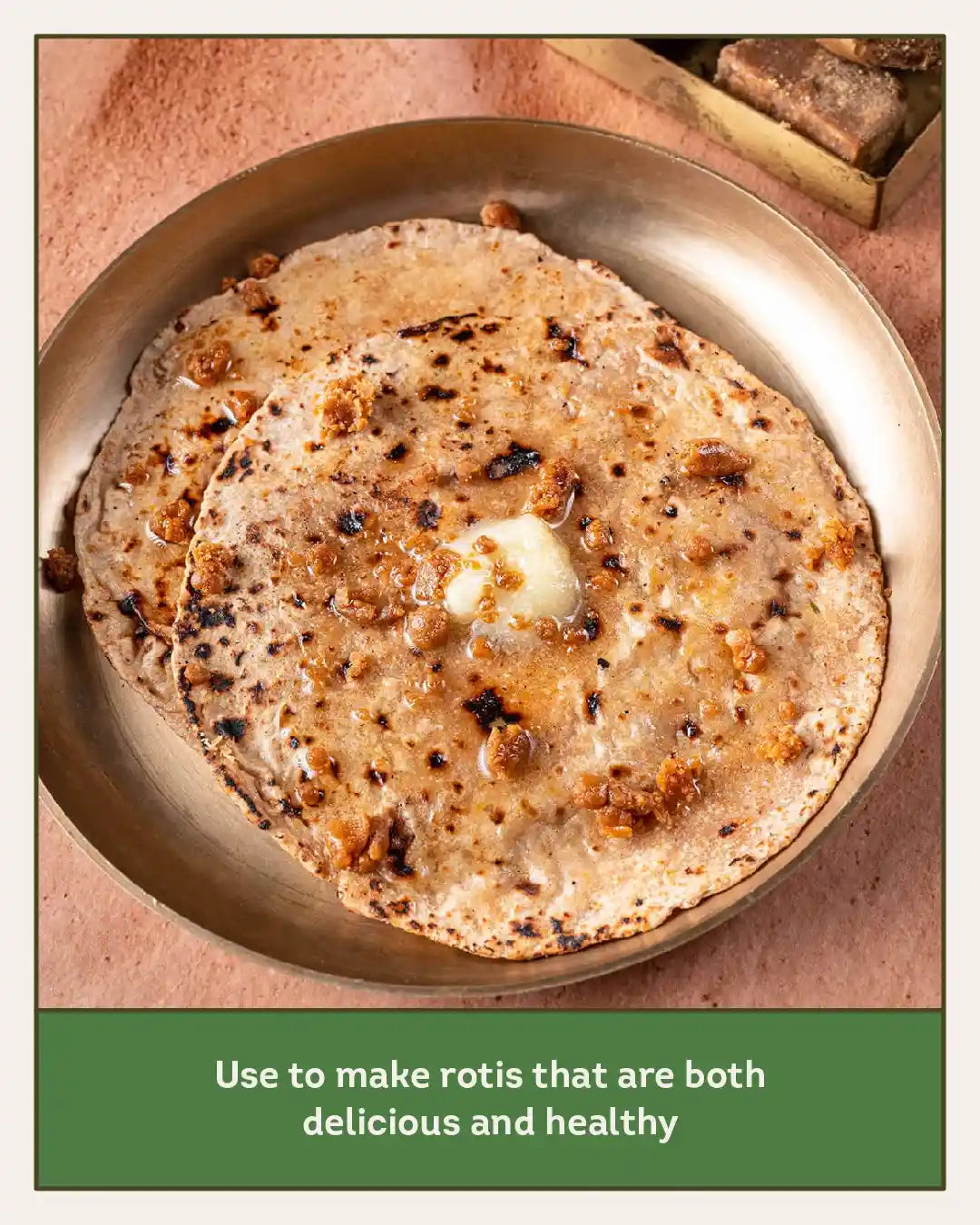
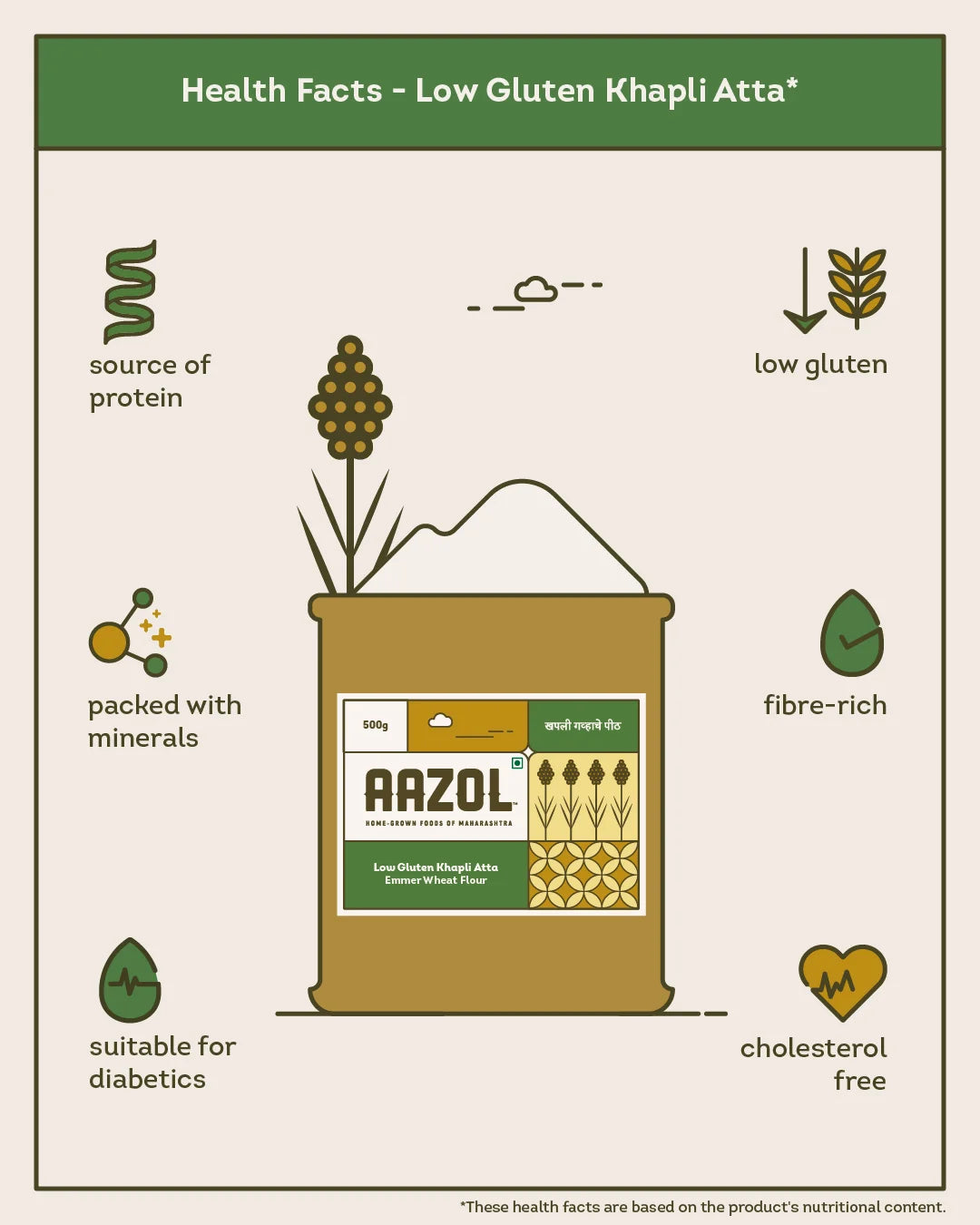
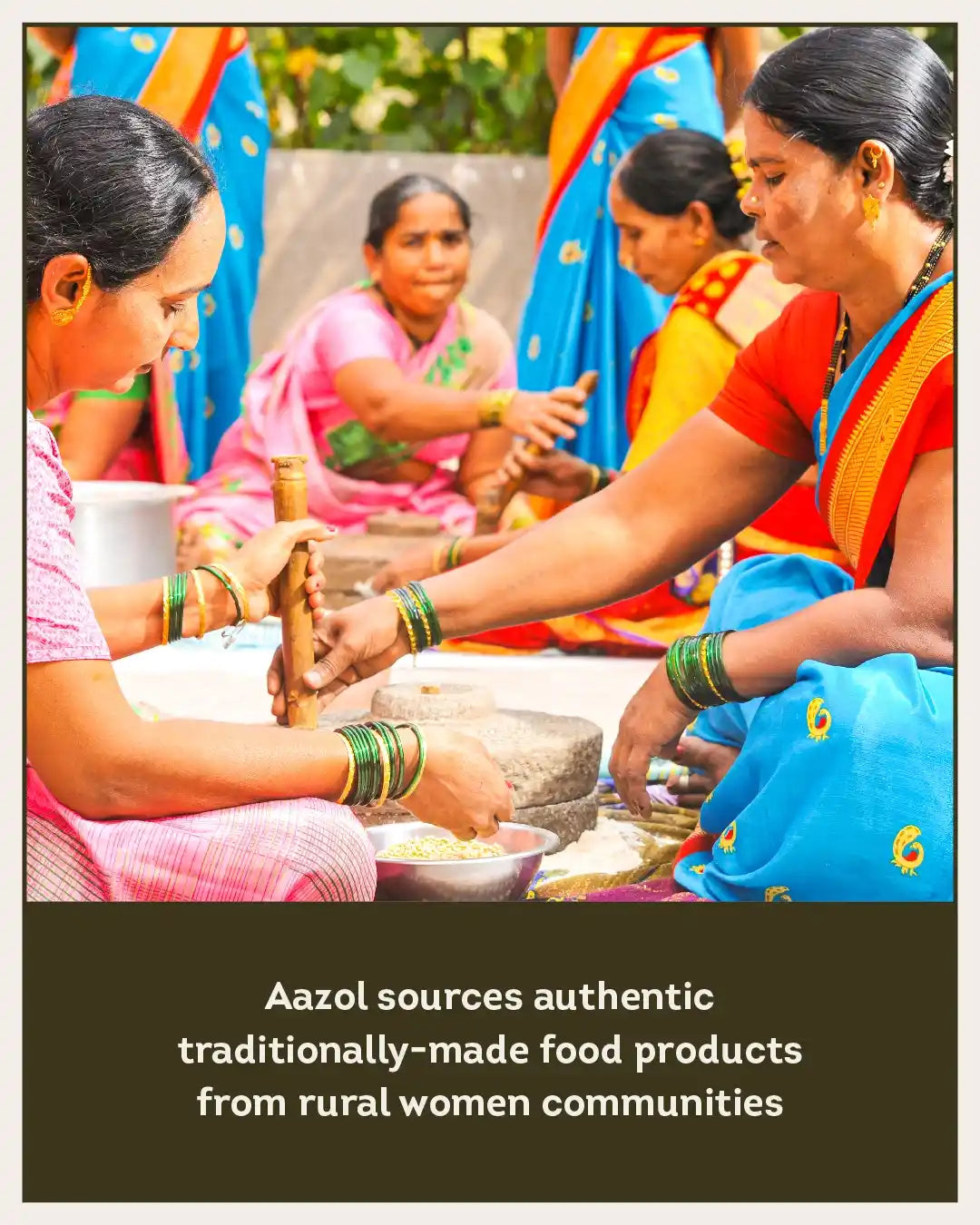
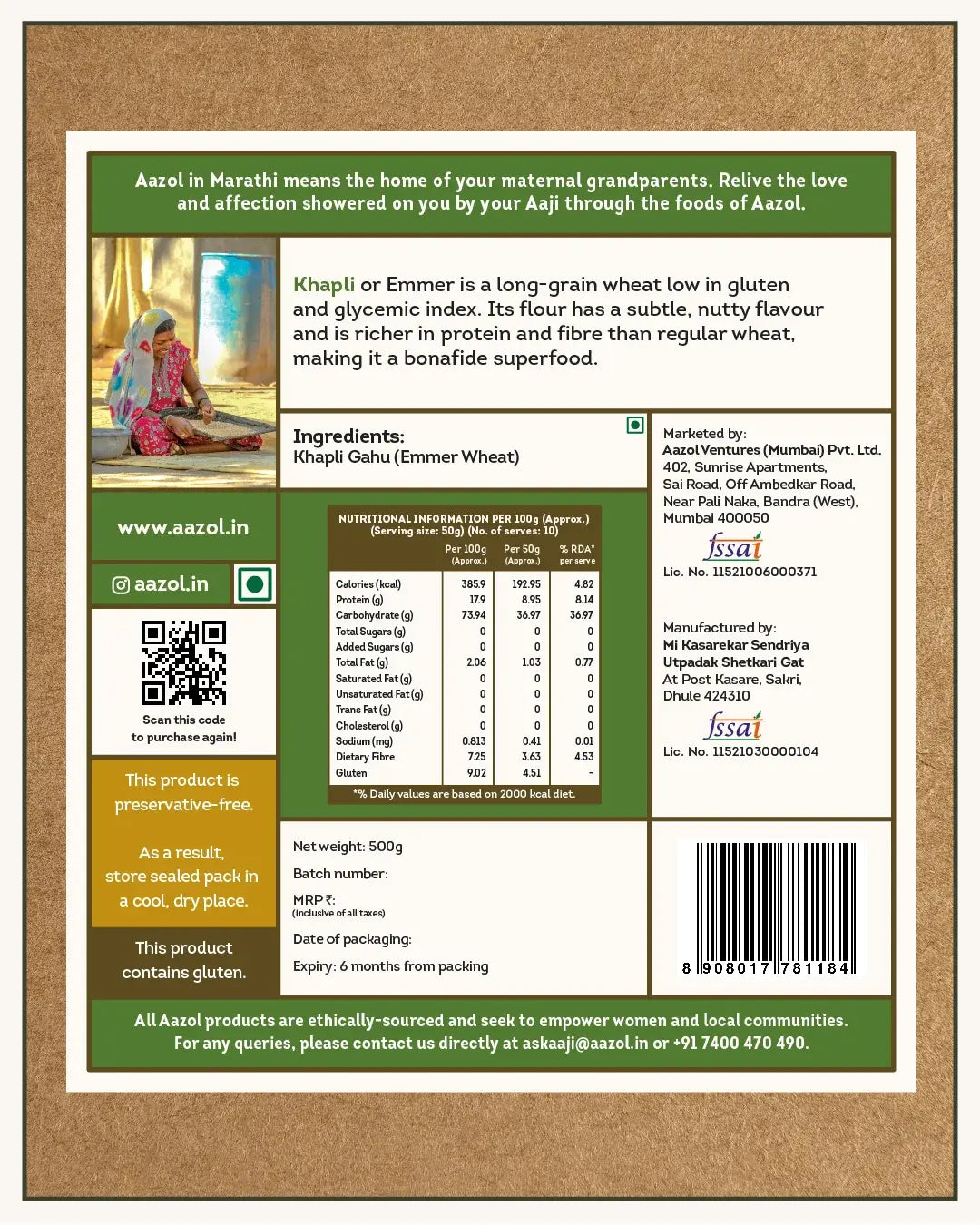
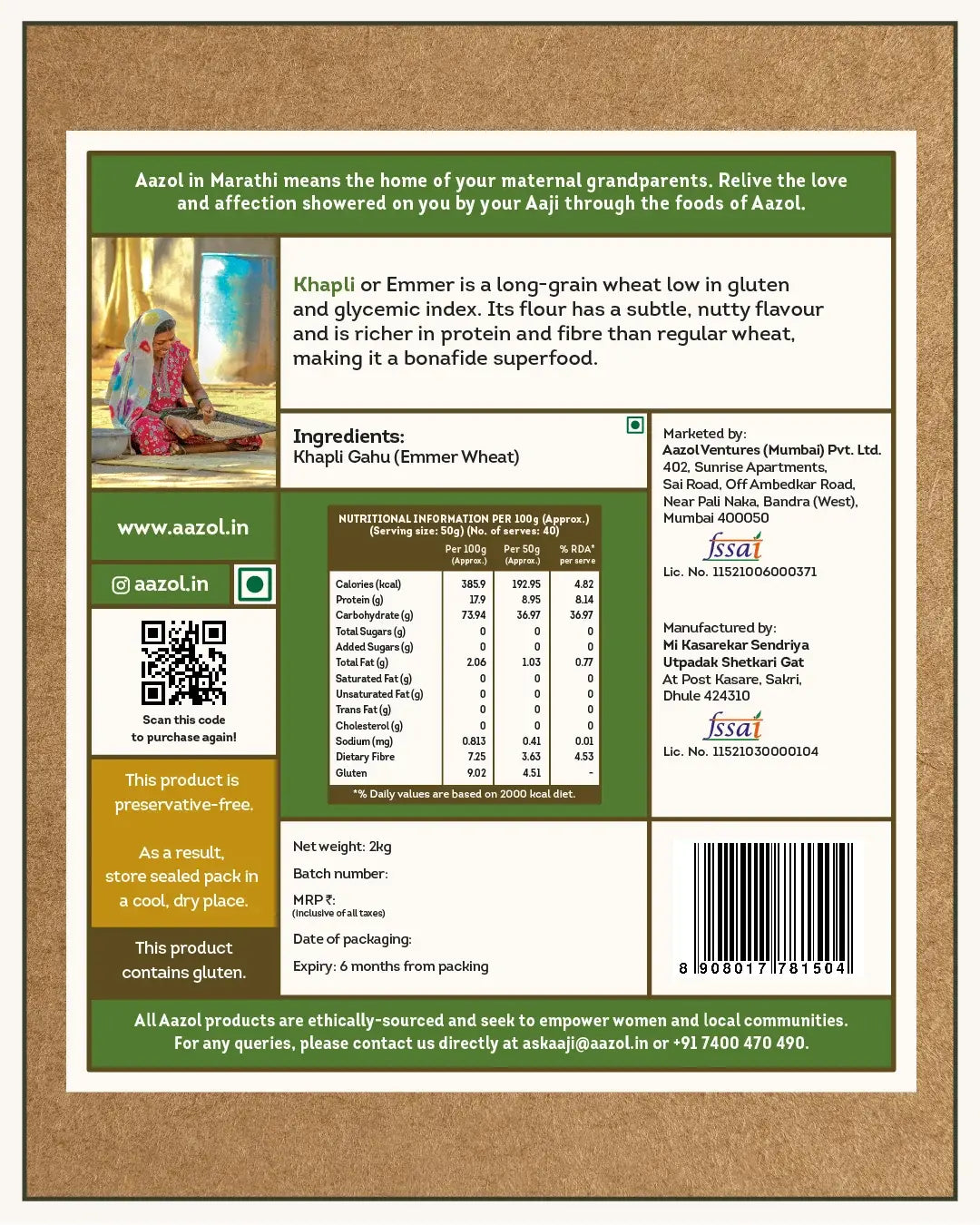
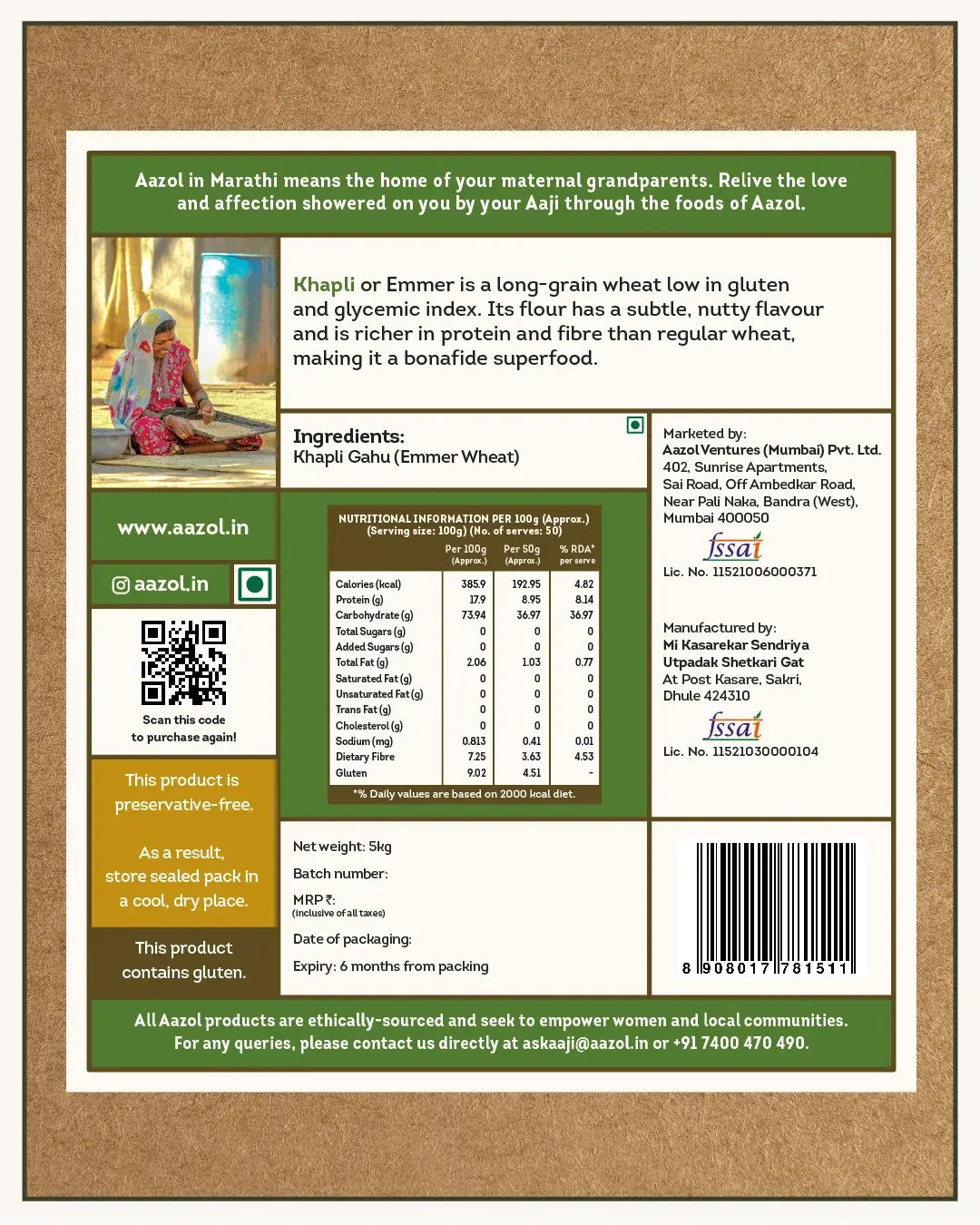
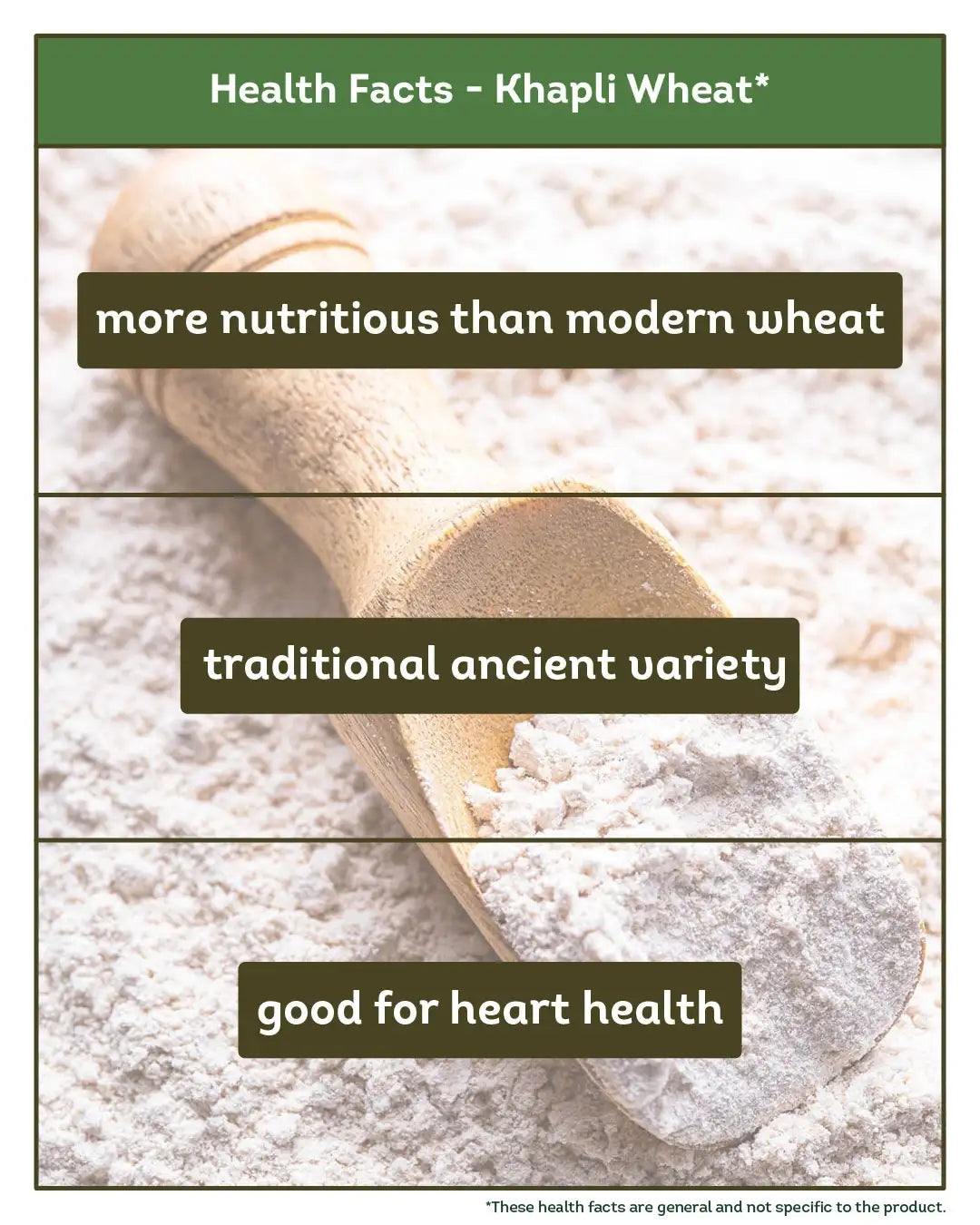

Low Gluten Khapli Atta: Emmer Wheat Flour (500g/2kg/5kg)
MRP is inclusive of all taxes.
Use codes AAZOL25 and AAZOL100
Free Shipping above INR 1,499
For orders INR 800 - 1,999
(Fees - INR 149)

Description
Khapli or Emmer is a long-grain wheat low in gluten and glycemic index. Its flour has a subtle, nutty flavour and is richer in protein and fibre than regular wheat, making it a bonafide superfood.
Provenance
Known as an ancestor of modern wheat, Khapli Gahu is said to date back 10,000 years. Having been around that long, it has been a staple in some of the world's greatest civilisations, including Indus Valley and Egypt. Its hardiness lends itself to growth in hot and arid areas. Maharashtra is a leader in Khapli cultivation, growing it as a drought and stress-resistant plant blessed with nature’s bounty.
About The Seller
Mi Kasarekar Sendriya Utpadak Shetkari Gat Kasare gets its name from the village it is based in, Kasare in the Dhule district. The farmer group is an offshoot of the NGO Mi Kasarekar, which is involved in the areas of primary education and organic farming. Rakesh Besale, the former sarpanch of the village is the head of the collective and hosts monthly meetings in which farmers receive regular guidance and have access to information regarding latest trends. Producing speciality items using indigenous methods cultivated by tribals residing near the Maharashtra-Gujarat border, all fifty farmers, including multiple women, have effectively advanced from primary field work to processing and creating end-products. By adhering to strict quality standards and overcoming their own inherent risk-averseness, the group is well on its way to achieving long-term income growth for all its stakeholders.
Shipping & Delivery
- Free shipping for orders above INR 499. For orders under or equal to INR 499, there is a shipping charge of INR 100.
- COD available on orders between INR 499 and INR 1,999. COD charge of INR 99 shall apply.
- Same-day dispatch for pre-paid orders placed before 2 PM.
- The delivery time is 2 to 7 business days from date of order.
- For detailed shipping policy, please visit here.
Other Information
MRP : ₹ 1,990
Country of Origin: India
Source, packed & marketed by: AAZOL VENTURES (MUMBAI) PRIVATE LIMITED, 402, Sun Rise Building, Pali Naka, Dr. Ambedkar Road, Bandra(West), Mumbai Suburban, Maharashtra, 400050, Phone: +91-7400470490, E-Mail: askaaji@aazol.in
Customer Care: AAZOL VENTURES (MUMBAI) PRIVATE LIMITED, 402, Sun Rise Building, Pali Naka, Dr. Ambedkar Road, Bandra(West), Mumbai Suburban, Maharashtra, 400050, Phone: +91-7400470490, E-Mail: askaaji@aazol.in
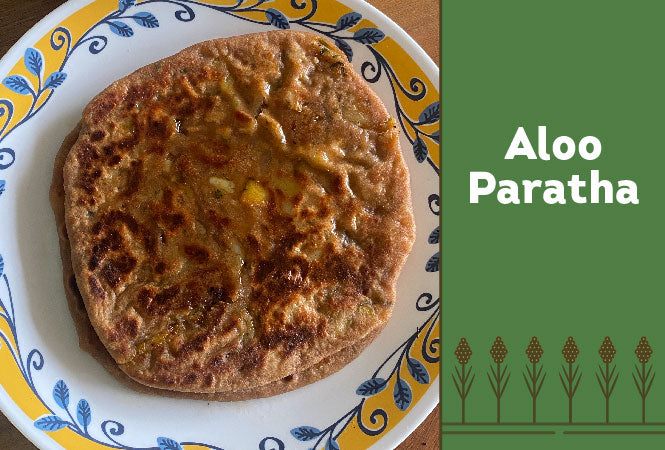
Aloo Paratha using Aazol's Low Gluten Khapli Atta
Enjoy the timeless delight of Aloo Paratha, made wholesome with Aazol’s Low Gluten Khapli Atta. This traditional Indian flatbread is a perfect blend of soft, flavourful stuffing and crispy, golden layers, especially when cooked with Aazol's Pure Gharwala Ghee. Follow this easy step-by-step guide to prepare a hearty meal for any time of the day.
Ingredients:
For the Dough:
- 2 cups Aazol’s Low Gluten Khapli Atta
- 1/2 teaspoon salt
- 3/4 cup water (adjust as needed)
For the Filling:
- 3 boiled and mashed potatoes
- 1 small onion, finely chopped
- 2 green chillies, finely chopped
- 2 tablespoons coriander leaves, chopped
- 1/2 teaspoon salt (adjust to taste)
- 1/2 teaspoon red chilli powder
- 1/2 teaspoon garam masala
For Cooking:
- Aazol’s Pure Gharwala Ghee
Method:
1. Prepare the Dough:
- In a large mixing bowl, combine Aazol’s Low Gluten Khapli Atta and salt.
- Gradually add water and knead into a smooth, soft dough.
- Cover the dough with a damp cloth and let it rest for 20 minutes.
2. Prepare the Filling:
- In a bowl, mix the boiled and mashed potatoes with chopped onion, green chillies, and coriander leaves.
- Add salt, red chilli powder, and garam masala.
- Mix everything thoroughly to ensure the spices are evenly distributed.
3. Assemble the Paratha:
- Divide the dough into small, equal-sized balls.
- Roll one ball into a small disc, about 4 inches in diameter.
- Place a portion of the potato filling in the centre.
- Gather the edges of the dough to seal the filling inside, forming a stuffed ball.
4. Roll Out the Paratha:
5. Cook the Paratha: 6. Serve Hot: Enjoy this classic, comforting dish, made even healthier and tastier with Aazol’s Low Gluten Khapli Atta!
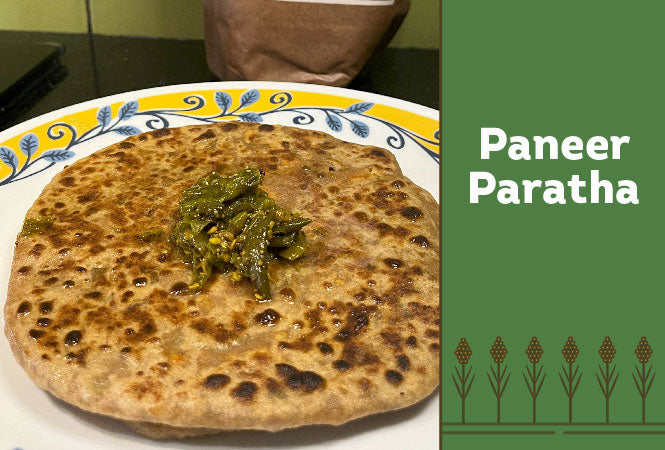
Paneer Paratha using Aazol's Low Gluten Khapli Atta
Treat yourself to a wholesome, protein-rich Paneer Paratha, made with the goodness of Aazol’s Low Gluten Khapli Atta and cooked in Aazol’s Pure Gharwala Ghee. This classic Indian dish is perfect for breakfast, lunch, or dinner. Here's the detailed recipe to recreate this mouth-watering delight.
Ingredients:
For the Dough:
- 2 cups Aazol’s Low Gluten Khapli Atta
- 1/2 teaspoon salt
- 3/4 cup water (adjust as required)
For the Filling:
- 1 cup paneer, grated
- 1 small onion, finely chopped
- 2 green chillies, finely chopped
- 2 tablespoons coriander leaves, chopped
- 1/2 teaspoon salt (adjust to taste)
- 1/2 teaspoon garam masala
- 1/2 teaspoon red chilli powder
- 1/2 teaspoon chaat masala
For Cooking:
- Aazol’s Pure Gharwala Ghee
Method:
1. Prepare the Dough:
- Combine Aazol’s Low Gluten Khapli Atta and salt in a mixing bowl.
- Gradually add water while kneading until a soft, pliable dough forms.
- Cover with a damp cloth and let it rest for 20 minutes
2. Prepare the Filling:
- In a bowl, mix grated paneer with chopped onions, green chillies, and coriander leaves.
- Add salt, garam masala, red chilli powder, and chaat masala.
- Mix thoroughly to combine all ingredients evenly.
3. Assemble the Paratha:
- Divide the dough into equal-sized balls.
- Roll out one ball into a small disc, about 4 inches in diameter.
- Place a generous portion of the paneer filling in the centre.
- Bring the edges of the dough together to seal the filling, forming a stuffed ball.
4. Roll Out the Paratha:
- Flatten the stuffed dough gently with your fingers and then roll it out into a circle of about 6-7 inches. Handle gently to avoid tearing.
5. Cook the Paratha:
- Heat a tawa or skillet over medium heat.
- Place the rolled paratha on the hot tawa and cook until small bubbles appear. Flip it.
- Spread Aazol’s Pure Gharwala Ghee on the cooked side and flip again.
- Apply ghee on the other side, press gently, and cook until both sides are golden brown and crisp.
6. Serve Hot:
- Serve the hot Paneer Parathas with yoghurt, pickle, or a dollop of Aazol’s Pure Gharwala Ghee for an authentic finish.
This Paneer Paratha is a delightful combination of nutrition and taste, made extra special with the natural goodness of Aazol’s Low Gluten Khapli Atta!
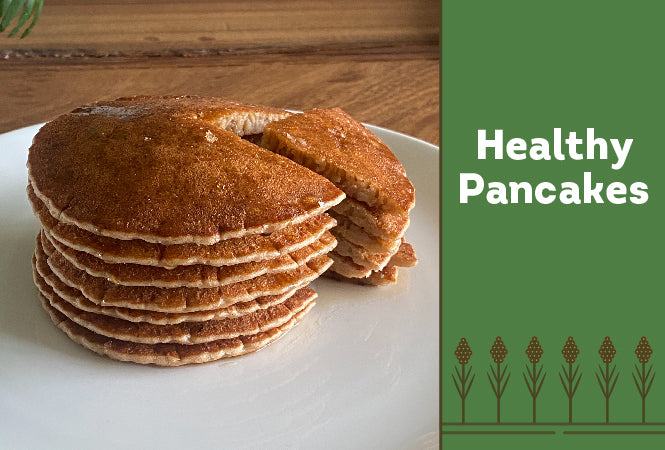
Healthy Pancakes using Aazol’s Low Gluten Khapli Atta
Enjoy soft and fluffy pancakes made with Aazol’s Low Gluten Khapli Atta. These wholesome treats are perfect for a nutritious breakfast, combining the goodness of ancient grains with a deliciously light texture.
Ingredients:
- 1 cup Aazol’s Low Gluten Khapli Atta
- 1/4 cup cornflour
- 1 teaspoon baking powder
- 1/2 cup powdered sugar
- A pinch of salt
- 1 cup milk (adjust as needed)
- 2 tablespoons melted butter
- 1 teaspoon vanilla essence
- 1 teaspoon vinegar
Method:
1. Prepare the Batter:
- In a large mixing bowl, combine Aazol’s Low Gluten Khapli Atta, cornflour, baking powder, powdered sugar, and a pinch of salt. Mix well.
- Add milk, melted butter, vanilla essence, and vinegar to the dry ingredients.
- Whisk until you have a smooth, lump-free batter. Adjust the consistency with more milk if it's too thick.
2. Heat the Pan:
- Heat a non-stick pan or griddle over medium heat. Lightly grease with butter or oil.
3. Cook the Pancakes:
- Pour a ladleful of batter onto the hot pan, spreading it gently into a circle.
- Cook for 2-3 minutes, or until bubbles form on the surface and the edges look set.
4. Flip and Finish:
- Carefully flip the pancake and cook for another 1-2 minutes until golden brown on both sides.
- Repeat with the remaining batter.
5. Serve Hot:
- Stack the pancakes and serve hot with honey, maple syrup, or fresh fruits.
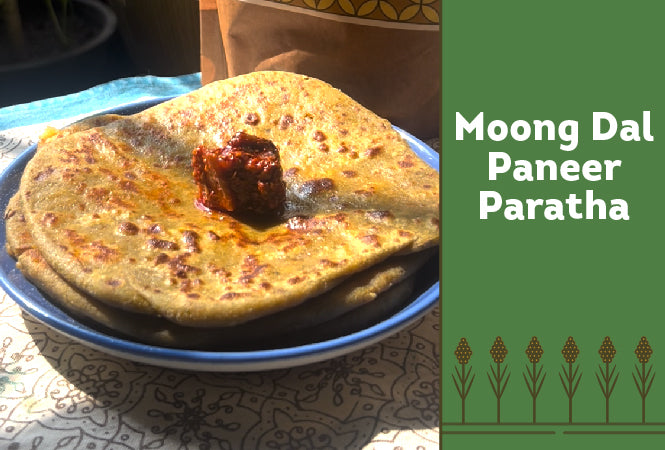
Moong Dal Paneer Paratha using Aazol's Low Gluten Khapli Atta
Make your mornings hearty and wholesome with this nutritious Moong Dal Paneer Paratha, prepared using Aazol’s Low Gluten Khapli Atta and Aazol’s Pure Gharwala Ghee for an authentic and flavourful experience.
Ingredients:
For the Dough:
- 1 cup soaked moong dal
- 2 green chillies
- 1-inch piece of ginger
- 2 tablespoons fresh coriander
- 1 cup Aazol’s Low Gluten Khapli Atta
- Salt to taste
- 1/4 teaspoon turmeric powder
- 1/2 teaspoon cumin seeds
- Water, as needed
For the Filling:
- 1 cup grated paneer
- 1 small onion, finely chopped
- Salt to taste
- 1/2 teaspoon red chilli powder
- 1/2 teaspoon garam masala powder
For Cooking:
- Aazol’s Pure Gharwala Ghee
Method:
1. Prepare the Moong Dal Paste:
- Blend soaked moong dal, green chillies, ginger, coriander, and a little water into a smooth paste.
2. Make the Dough:
- Knead into a soft dough, adding water as needed. Cover and let it rest for 20 minutes.
3. Prepare the Filling:
- In a separate bowl, mix grated paneer, chopped onion, salt, red chilli powder, and garam masala.
4. Roll and Stuff the Parathas:
- Divide the dough into small portions and roll each into a small circle.
- Place a spoonful of the paneer mixture in the centre.
- Fold and seal the edges, then gently roll into a paratha.
5. Cook the Parathas:
- Heat a tawa or skillet and cook the paratha on medium heat.
- Drizzle Aazol’s Pure Gharwala Ghee on both sides and cook until golden brown spots appear.
6. Serve:
- Serve hot with yoghurt, pickle, or any chutney of your choice.
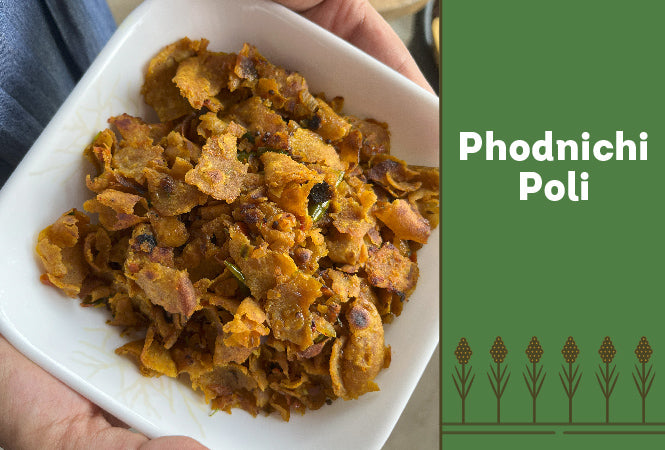
Phodnichi Poli using Aazol's Low Gluten Khapli Atta
Transform leftover chapatis into a flavour-packed, comforting dish with Aazol’s Low Gluten Khapli Atta and the richness of Aazol’s Pure Gharwala Ghee.
Ingredients:
- 3 leftover chapatis, torn into small pieces
- 2 tablespoons Aazol’s Pure Gharwala Ghee
- 1 teaspoon cumin seeds
- 1 green chilli, finely chopped
- 1 medium onion, finely chopped
- 1 medium tomato, finely chopped
- 1/4 teaspoon haldi (turmeric powder)
- 1/2 teaspoon red chilli powder
- Salt to taste
- Chopped coriander for garnish
Method:
1. Prepare the Chapati Pieces:
- Tear the leftover chapatis into bite-sized pieces and set them aside.
2. Heat the Ghee:
- Heat Aazol’s Pure Gharwala Ghee in a pan over medium heat.
3. Make the Tadka:
- Add cumin seeds and let them crackle.
- Add chopped green chilli and sauté for a few seconds.
4. Sauté the Onions and Tomatoes:
- Add the chopped onion and sauté until golden brown.
- Add the chopped tomato and cook until soft and mushy.
5. Add the Spices:
- Stir in haldi, red chilli powder, and salt. Mix well.
6. Combine with Chapati Pieces:
- Add the torn chapati pieces to the pan and mix well, ensuring the masala coats the chapati evenly.
- Stir-fry for 2-3 minutes on low heat.
7. Garnish and Serve:
- Sprinkle chopped coriander over the Phodnichi Poli.
- Serve hot as a quick breakfast or a light meal.
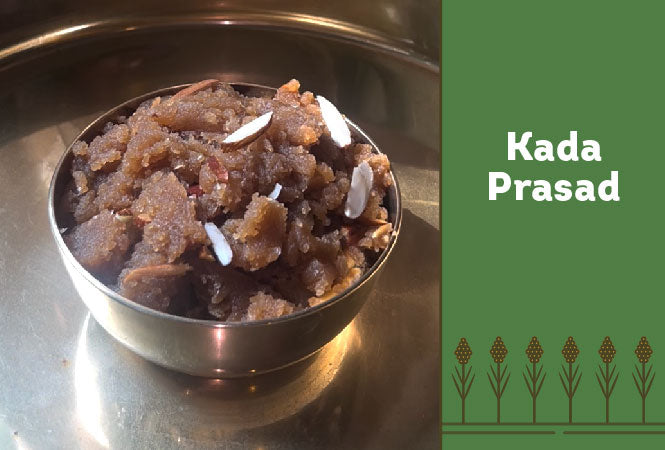
Kada Prasad using Aazol's Low Gluten Khapli Atta
This simple and traditional halwa is made rich and aromatic with Aazol’s Pure Gharwala Ghee and roasted almonds. A perfect dessert for any occasion!
Ingredients:
- 2 tablespoons Aazol’s Pure Gharwala Ghee
- 1/4 cup almonds, sliced
- 1/2 cup Aazol’s Low Gluten Khapli Atta
- 1 cup water
- 1/2 cup sugar
Method:
1. Roast the Almonds:
- Heat Aazol’s Pure Gharwala Ghee in a pan.
Add the sliced almonds and fry until golden brown.
Remove and set aside.
2. Prepare the Halwa:
- Stir continuously to prevent burning.
In the same pan, add Aazol’s Low Gluten Khapli Atta and roast on medium heat until it turns aromatic and light brown.
3. Add Water:
- Gradually add water to the roasted atta, stirring constantly to avoid lumps.
4. Sweeten the Halwa:
- Add sugar and continue stirring until the mixture thickens and leaves the sides of the pan
5. Garnish and Serve:
- Mix in the fried almonds and a teaspoon of Aazol’s Pure Gharwala Ghee for extra richness.
- Serve the halwa hot and enjoy its warm, nutty flavour.
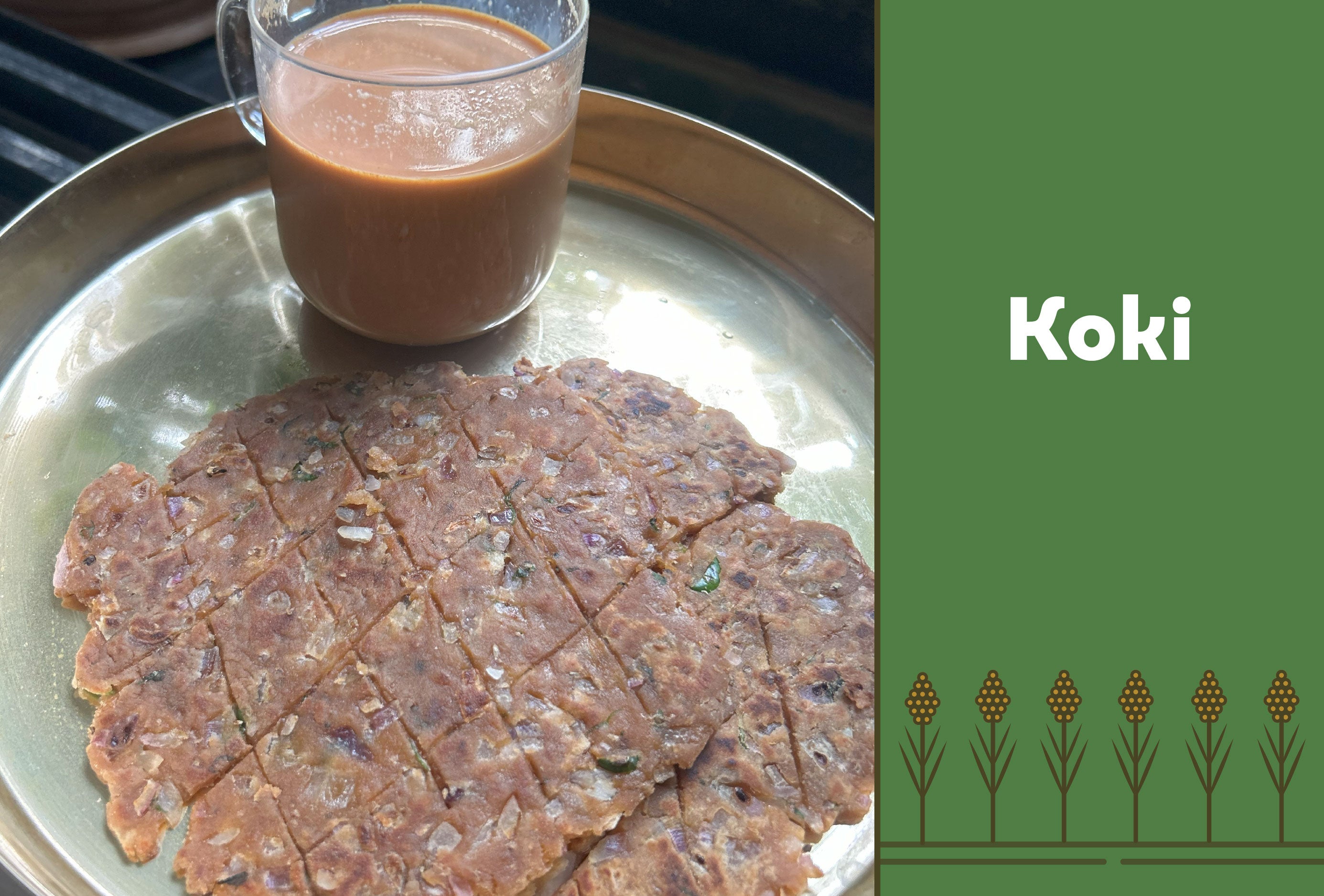
Sindhi Koki using Aazol's Low Gluten Khapli Atta
Enjoy the crisp and flavourful Sindhi Koki, a traditional flatbread that stays soft yet crunchy. Made wholesome with Aazol’s Low Gluten Khapli Atta and cooked with Aazol’s Pure Gharwala Ghee, this delicious dish is perfect for breakfast or a light meal. Follow this easy step-by-step guide to make it at home.
Ingredients:
For the Dough:
- 2 cups Aazol’s Low Gluten Khapli Atta
- 1 teaspoon ajwain (carom seeds), roasted
- 1 small onion, finely chopped
- 2 green chillies, finely chopped
- 2 tablespoons coriander leaves, chopped
- ½ teaspoon salt
- ½ teaspoon red chilli powder
- ½ teaspoon black pepper powder
- 2 tablespoons Aazol’s Pure Gharwala Ghee
- ¾ cup water (adjust as needed)
For Cooking:
- Aazol’s Pure Gharwala Ghee
Method:
1. Prepare the Dough:
- In a large mixing bowl, combine Aazol’s Low Gluten Khapli Atta, roasted ajwain, onions, green chillies, and coriander.
- Add salt, red chilli powder, black pepper, and Aazol’s Pure Gharwala Ghee.
- Gradually add water and knead into a firm dough.
- Cover and let the dough rest for 15-20 minutes.
2. Shape and Roll:
- Divide the dough into small, equal-sized balls.
- Roll one ball into a thick, round disc (about 5-6 inches in diameter).
- Using a knife, make small cuts or slits on the rolled dough.
3. Cook the Koki:
- Heat a tawa or skillet over medium heat.
- Place the rolled koki on the hot tawa and cook for 1-2 minutes.
- Flip and apply Aazol’s Pure Gharwala Ghee on one side.
- Flip again, apply ghee on the other side, and press gently with a spatula.
- Cook until both sides turn golden brown and crisp.
4. Serve Hot:
- Enjoy your Sindhi Koki with curd, pickle, or a hot cup of chai.
Relish the crispy, flavour-packed Koki, made even better with Aazol’s Low Gluten Khapli Atta and Aazol’s Pure Gharwala Ghee!
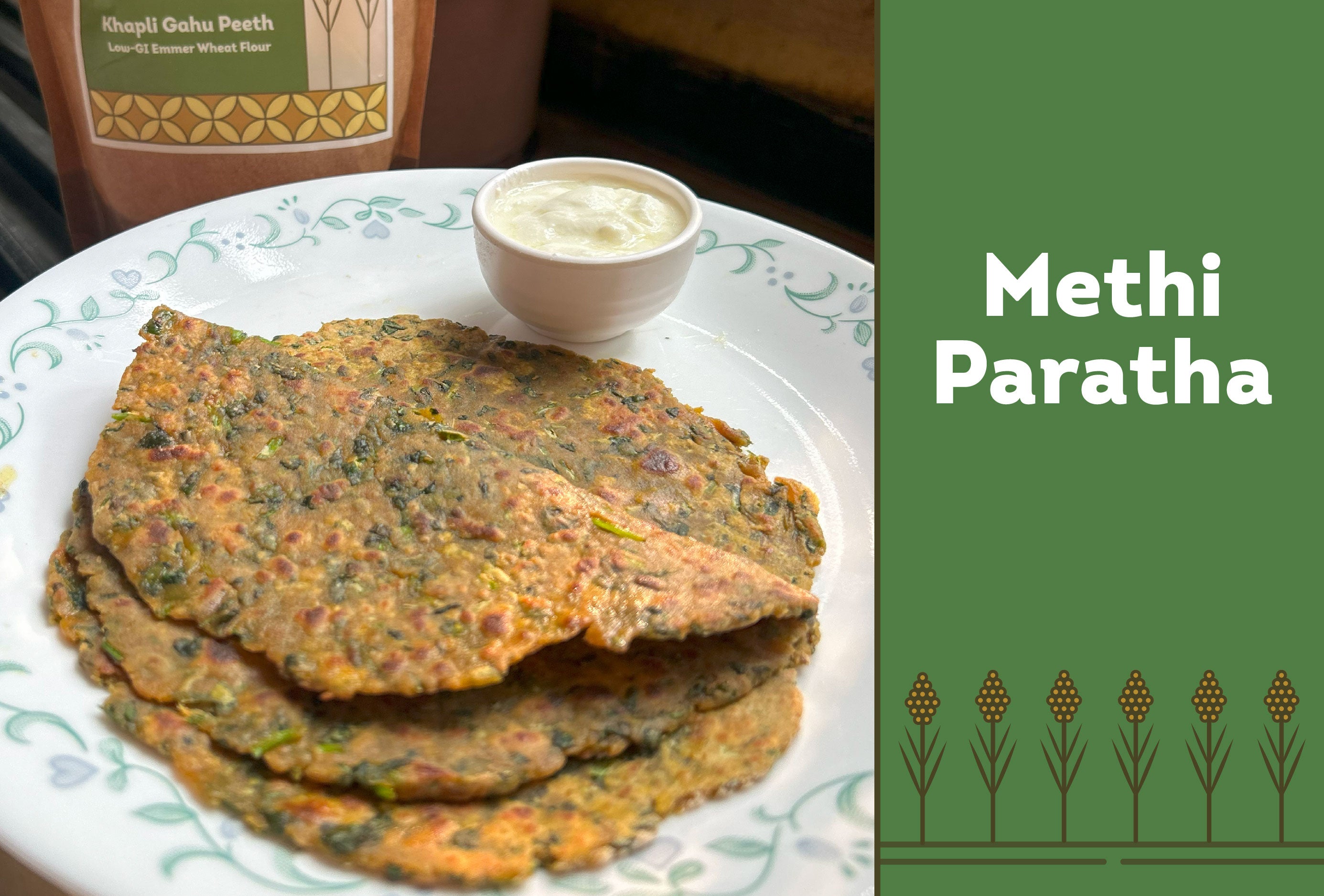
Methi Paratha using Aazol's Low Gluten Khapli Atta
Enjoy the aromatic and nutritious Methi Paratha, made wholesome with Aazol’s Low Gluten Khapli Atta. This traditional Indian flatbread is packed with the goodness of fresh fenugreek leaves and the richness of Aazol's Pure Gharwala Ghee. Follow this easy step-by-step guide to prepare a delicious, healthy meal for any time of the day.
Ingredients:
For the Dough:
- 2 cups Aazol’s Low Gluten Khapli Atta
- ½ cup besan (gram flour)
- ½ teaspoon salt
- ¾ cup water (adjust as needed)
For the Seasoning:
- 1 teaspoon ajwain (carom seeds), roasted
- 1 teaspoon cumin seeds
- ½ teaspoon red chilli powder
- ½ teaspoon haldi (turmeric powder)
- A pinch of hing (asafoetida)
- 2 green chillies, finely chopped
- ¼ cup curd
- 2 tablespoons Aazol’s Pure Gharwala Ghee
For Cooking:
- Aazol’s Pure Gharwala Ghee
Method:
1. Prepare the Dough:
- In a large mixing bowl, combine Aazol’s Low Gluten Khapli Atta, besan, and salt.
- Add roasted ajwain, cumin seeds, red chilli powder, haldi, and hing.
- Add chopped green chillies, curd, and Aazol’s Pure Gharwala Ghee. Mix well.
- Gradually add water and knead into a soft, smooth dough.
- Cover the dough with a damp cloth and let it rest for 20 minutes.
2. Roll Out the Paratha:
- Divide the dough into small, equal-sized balls.
- Roll one ball into a circular disc, about 6 inches in diameter.
3. Cook the Paratha:
- Heat a tawa or skillet over medium heat.
- Place the rolled paratha on the hot tawa and cook until light brown spots appear, then flip.
- Apply Aazol’s Pure Gharwala Ghee on the cooked side.
- Flip again, apply ghee on the other side, and press gently with a spatula. Cook until both sides are golden brown and crispy.
4. Serve Hot:
- Serve your freshly made Methi Paratha with yoghurt, pickle, or a generous dollop of Aazol’s Pure Gharwala Ghee for an authentic taste.
Enjoy this wholesome and flavourful Methi Paratha, made even healthier with Aazol’s Low Gluten Khapli Atta!
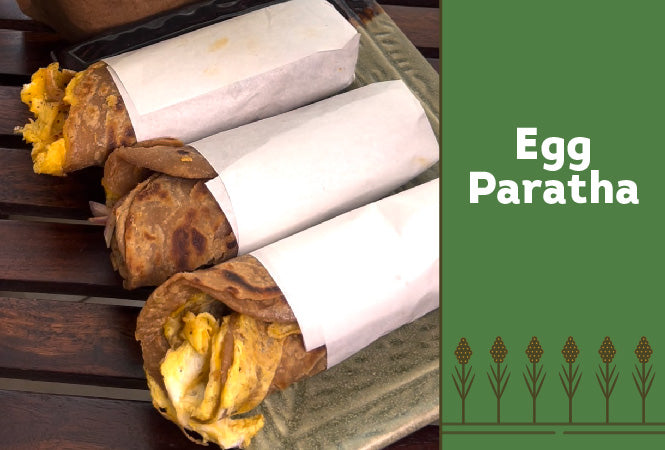
Egg Paratha using Aazol’s Low Gluten Khapli Atta
Enjoy this delicious and protein-packed Egg Paratha, made wholesome with Aazol’s Low Gluten Khapli Atta. A crispy, golden paratha layered with a perfectly spiced egg mixture makes for a satisfying breakfast or meal on the go.
Ingredients:
For the Paratha:
- 2 cups Aazol’s Low Gluten Khapli Atta
- ½ teaspoon salt
- ¾ cup water (adjust as needed)
For the Egg Mixture:
- 2 eggs
- 1 small onion, finely chopped
- 1 green chilli, finely chopped
- ½ teaspoon red chilli powder
- ½ teaspoon salt (adjust to taste)
For Assembling:
- 1 small onion, sliced
- ½ teaspoon chaat masala
- 1 teaspoon tomato sauce
- ½ teaspoon lemon juice
Method:
1. Prepare the Dough:
- In a mixing bowl, combine Aazol’s Low Gluten Khapli Atta and salt.
- Gradually add water and knead into a soft dough.
- Cover and let the dough rest for 20 minutes.
2. Roll and Cook the Paratha:
- Divide the dough into small portions.
- Roll out one portion into a thin circle.
- Fold it in half, then fold again to form a triangle.
- Roll out again into a thin paratha.
- Cook the paratha on a hot tawa until golden brown spots appear.
- Flip and cook the other side.
3. Prepare the Egg Mixture:
- In a bowl, beat the eggs with chopped onions, green chillies, red chilli powder, and salt.
4. Cook the Egg Paratha:
- Pour the egg mixture onto the partially cooked paratha.
- Flip carefully and cook until the egg is set.
5. Assemble the Wrap:
- In a bowl, mix sliced onions with chaat masala, tomato sauce, and lemon juice.
- Place the prepared egg paratha on a plate.
- Top with the seasoned onions.
- Roll it up tightly.
6. Serve Hot:
- Enjoy your Egg Paratha wrap with chutney or yoghurt.
A wholesome, protein-rich meal with the goodness of Aazol’s Low Gluten Khapli Atta!








